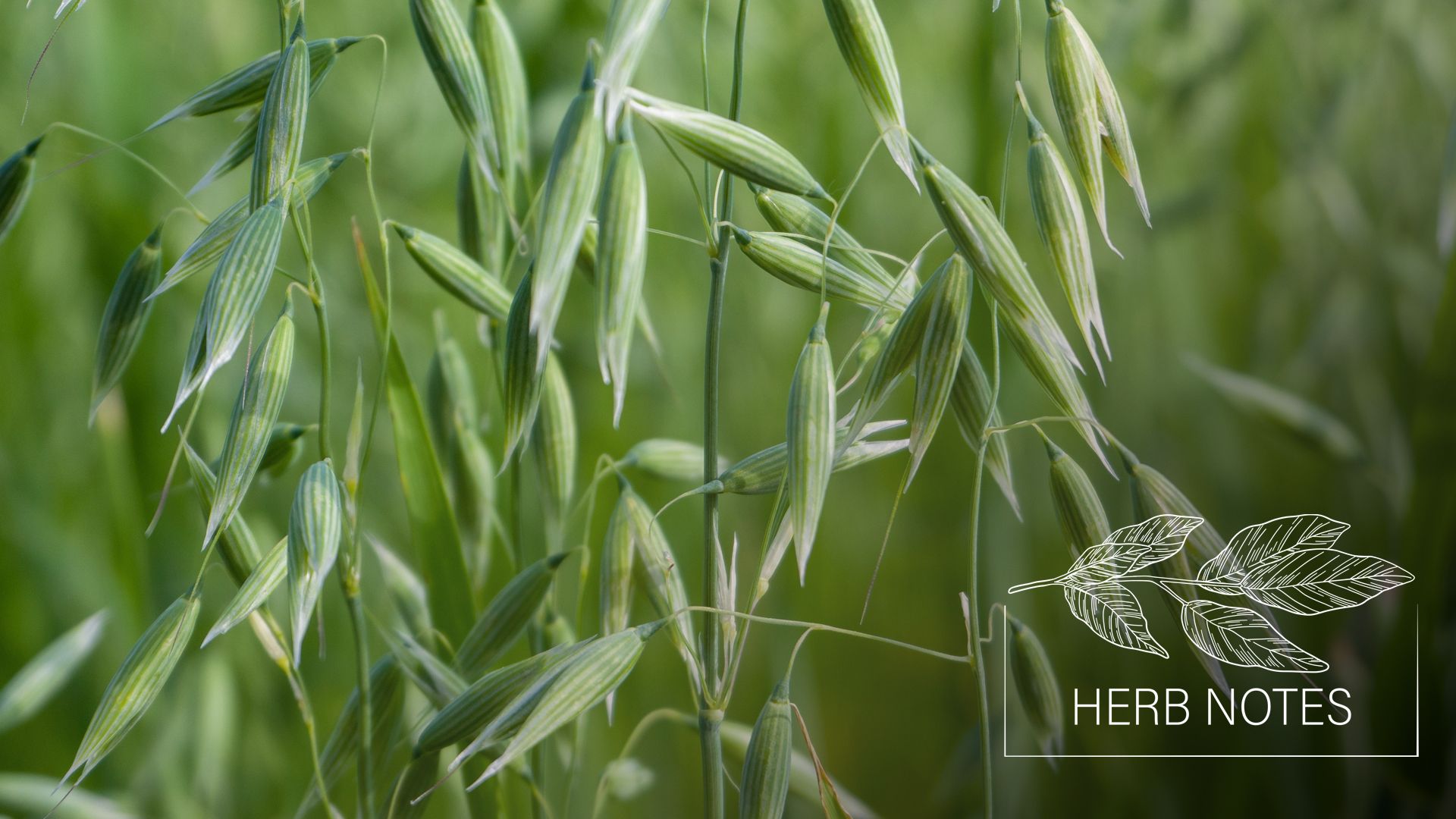
Blackberry Uses and Plant Profile
For many, the first experience with wild edibles comes from gathering blackberries along forest paths or near streams. Yet few realize that the entire plant is a medicinal powerhouse, capable of addressing ailments ranging from diarrhea to fevers. Blackberry is abundant, delicious, and easy to identify. Gentle enough for children yet potent enough for adults, this versatile healer is widely accessible and deserves far more recognition than it gets.
Steeped in folklore, blackberry has long been used by healers, wise women, and folk medicine practitioners across Europe, as well as by Native American herbalists. From medieval herbalism to the Eclectics, it was regarded as nothing short of magical—some even speculated that it appeared in the Old Testament as the “burning bush” and was used to crown Jesus before the crucifixion.1
Blackberry leaf has been recognized for its medicinal properties since at least the first century, with Dioscorides documenting its therapeutic uses in his renowned work De Materia Medica.2 Midwives and herbalists traditionally relied on blackberry for its astringent, anti-inflammatory, and tonic properties. And while some of the qualities once ascribed to blackberry are pretty outlandish (a remedy against the poison of the most venomous serpents3,4—really?), many have since been confirmed by modern science. Today, blackberry serves as an evidence-based supportive remedy for a variety of concerns, including wound healing, digestive health, respiratory health, and women’s wellness.
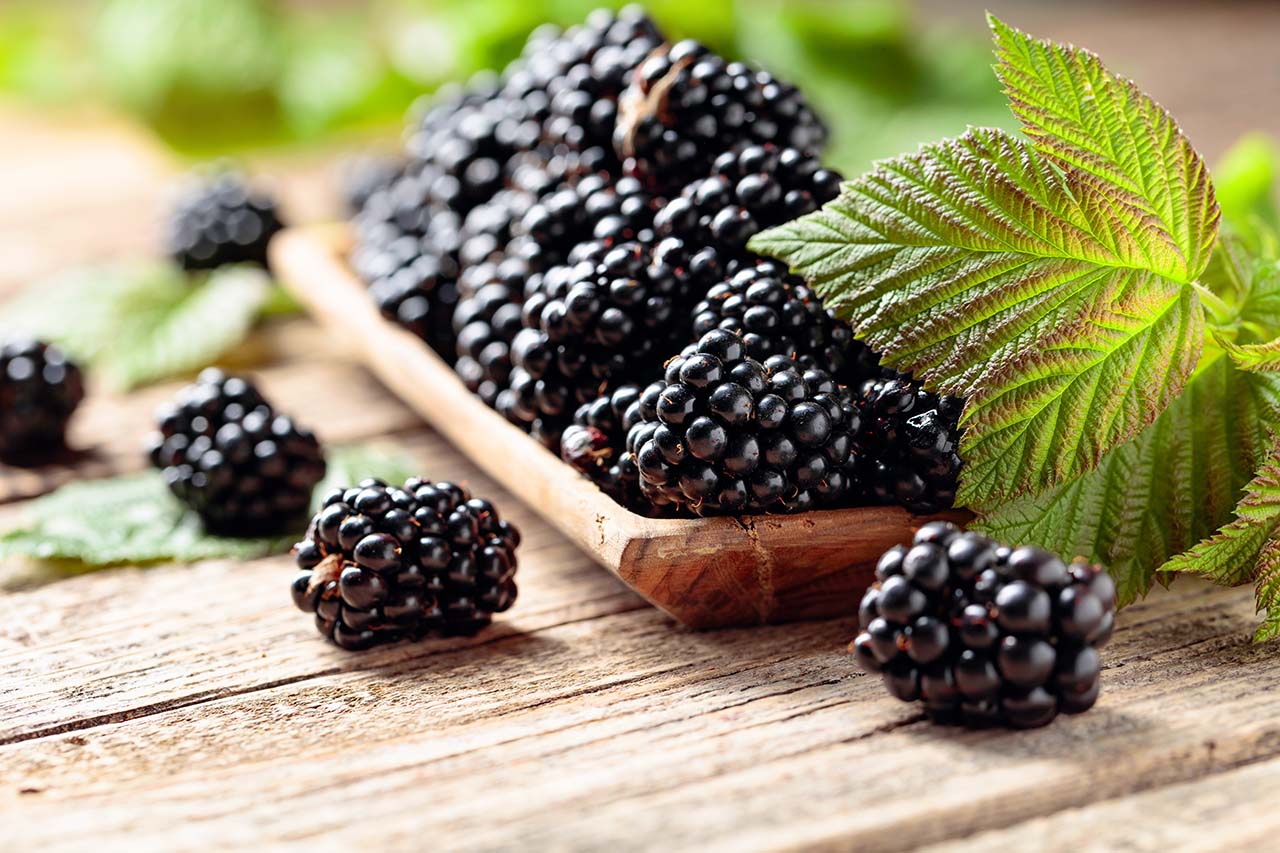
Blackberry Uses and Plant Profile Summary
-
Botanical Name: Rubus fruticosus L., R. canadensis, R. armeniacus, R. ursinus, R. coreanus, and other R. spp.
-
Common Varieties: bramble, briar (brier), dewberry, caneberry, gout berry
-
Family: Rosaceae
-
Parts Used: fruit, leaf, young shoots or stems, and roots
-
Energetics: neutral to slightly cooling, moistening
-
Taste: fruit: sweet, slightly sour; leaf and roots: sour, astringent, bitter
-
Plant Properties: Root: styptic , astringent, hemostatic, antiarthritic , antidiarrheal , anti-inflammatory ; also antimicrobial in some cases; Fruit: lithotriptic , diuretic , antiarthritic, blood tonic , yin tonic , anti-oxidant; rich in vitamins like C and K; Leaf: astringent, uterine and intestinal tonic , antiarthritic, antiseptic , antidiarrheal, anti-inflammatory, and mildly expectorant
-
Plant Uses: diarrhea, viral gastroenteritis, infant’s irritable bowel, bleeding (internal or external), sore throat, mouth ulcers, dysentery, cholera, excessive menstruation, fevers, anemia, gout, hemorrhoids, leukorrhea, oral health (gum issues, thrush), skin health , wounds, respiratory support , and even mild pain relief
-
Plant Preparations: tea , poultice , jam , syrup , oil , food , tincture , or vinegar infusion
Blackberry for Digestive Health
Nicholas Culpeper praised blackberry for its medicinal virtues, noting that it "helpeth sores of the fundament and piles.”5 In his time, "sores of the fundament" referred to anal ulcers, fissures, or inflammation around the anus, while "piles" meant hemorrhoids. This suggests that, even though it was written many years ago, practitioners were already aware that blackberry possesses astringent, anti-inflammatory, and soothing properties that help reduce swelling, pain, and irritation. Culpeper also wrote that "the decoction of leaves and brambles, and of dried branches, do much bind the belly,”6 highlighting blackberry’s traditional use for diarrhea. The leaves and roots of Rubus fruticosus are rich in tannins, which tighten intestinal tissues and reduce fluid loss.
Traditional Indigenous medicine supports this as well. The Micmac have used Rubus fruticosus bark and roots as an antidiarrheal, particularly for childhood diarrhea.7 The Delaware have used Rubus canadensis for dysentery, while the Menominee have prepared a decoction of the root for similar ailments.8 Eclectic physician John King also valued blackberry for children’s digestive issues, describing Rubus villosus as particularly suited to cases of "copious, watery, and clay-colored" stools, often seen in children with weak digestion.9 Herbalists Thomas Easley, Alma R. Hutchens, and Brigitte Mars echoed this, specifically recommending blackberry syrup for childhood diarrhea.10,11,12
A study by Choe et al. (2020), conducted using in vitro methods in a lab, showed that blackberry seed flour extract can support gut health by boosting beneficial bacteria and balancing gut microbes. It also revealed strong antioxidant effects, helping to combat harmful molecules, and showed promise in reducing inflammation and slowing cancer cell growth through test-tube experiments. These results suggest blackberry seed flour could have health benefits, but further research is needed.13
Renowned herbalist Stephen Buhner suggested that blackberry root could be an effective treatment for viral gastroenteritis, including rotaviruses and noroviruses, as tannins in the plant inhibit viral proteins from binding to intestinal cells.14 David Hoffmann describes blackberry’s astringent properties as highly beneficial for reducing surface inflammation and irritation, creating a protective barrier against infection in the digestive tract—though he warns against long-term use due to its potential to inhibit nutrient absorption.15
Grieve also recommended an infusion of dried blackberry leaves, taken cold, as a reliable remedy for diarrhea and dysentery due to its astringent and tonic effects.16
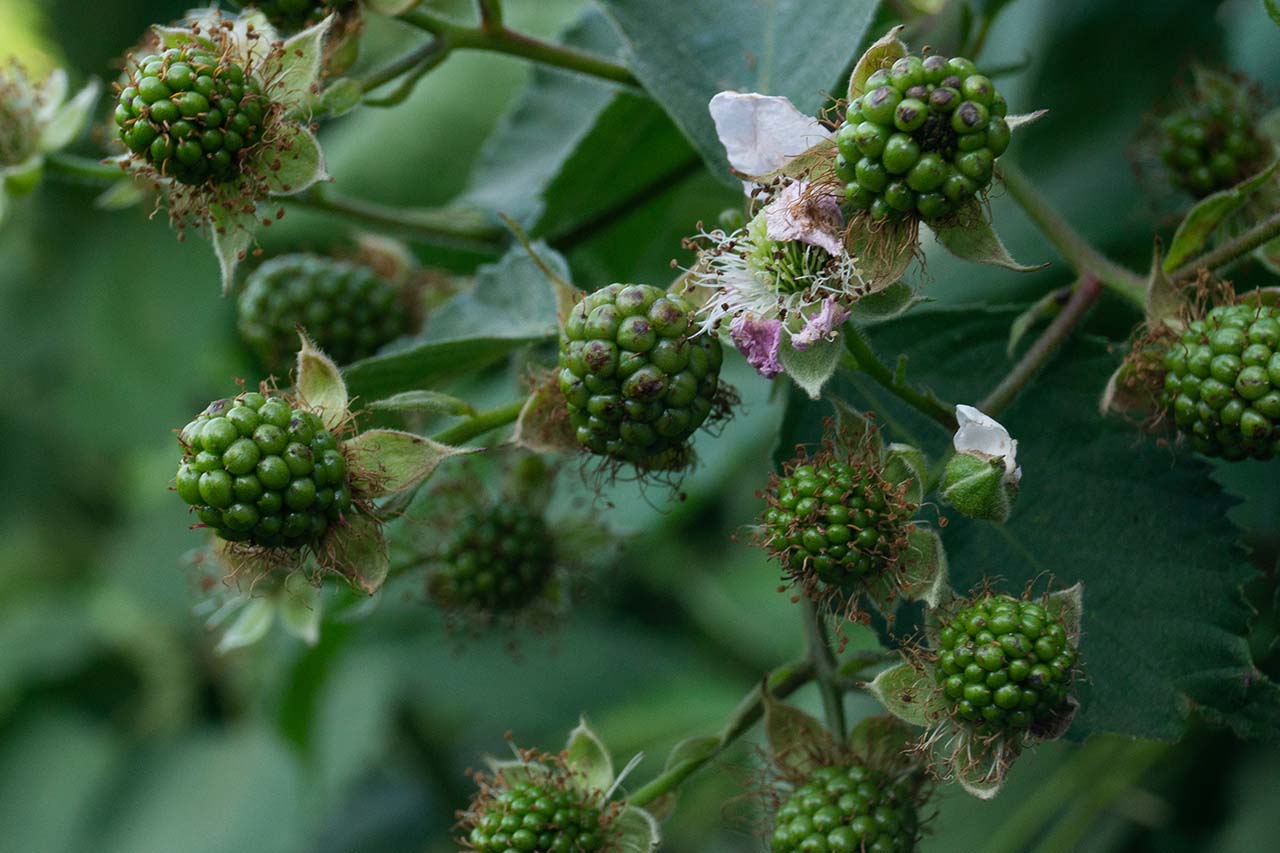
Blackberry for Cancer Prevention
Medieval herbalist Hildegard of Bingen once dismissed blackberries as nothing more than a tasty but useless treat,17 but modern research paints a different picture. These juicy berries are packed with powerful antioxidants that help protect the body from harmful free radicals, reduce inflammation, and even play a role in cancer prevention.
In vitro studies have shown that certain natural compounds in blackberries, such as flavonoids and anthocyanins, can inhibit the spread of cancer cells and promote apoptosis, a process where cancer cells self-destruct, as observed in lab-based cell cultures.18 Additionally, laboratory experiments using in vitro methods revealed that blackberry extracts reduce UV-induced cellular damage and enhance defenses against mutations that could lead to cancer, highlighting their antioxidant potential in controlled settings.19 Researchers even discovered that unripe green blackberries contain high levels of a powerful anti-cancer compound, which, when refined into a concentrated extract, was able to kill over half of cervical cancer cells in lab tests.20
Additionally, the fruit extract from hull blackberries, which contains special natural compounds called ursane-type terpenoids and phenolic compounds, showed promising anti-cancer abilities by slowing down the growth of colon cancer cells. It also helped fight inflammation by lowering the release of substances in the body that cause swelling and pain, known as pro-inflammatory cytokines. In simple terms, this means the blackberry extract could be a natural way to tackle both cancer and inflammation, making it a pretty impressive fruit!21
While this monograph centers on blackberries, it’s worth noting that studies on related berries—such as black raspberries, blueberries, and red raspberries—suggest blackberries may share similar health benefits, given that many berries have overlapping compounds and work in comparable ways.
For instance, clinical trials with black raspberries, a close relative of blackberries, showed promise: a study of smokers at high risk for head and neck cancers revealed that eight weeks of black raspberry lozenges significantly reduced markers of oxidative damage in their cells, suggesting these berries might aid in repairing environmental stress damage.22 Similarly, research on blueberries and red raspberries has shown they can slow cancer cell growth in areas like the mouth, breast, lungs, colon, and prostate,23 while another study found raspberry polyphenols specifically targeted colon cancer cells in lab tests, strengthening their anti-cancer potential.24 Since blackberries share many of these bioactive compounds and action pathways with their berry relatives, these findings indicate they could offer similar protection against cancer and inflammation.
Scientists are still unraveling the precise ways blackberries and other berries shield us from cancer, but one thing is certain: these fruits are loaded with powerful compounds that boost overall health. Their strength doesn’t hinge on one 'miracle' component but comes from a team effort of natural substances—like antioxidants and phytochemicals—working together to protect the body.
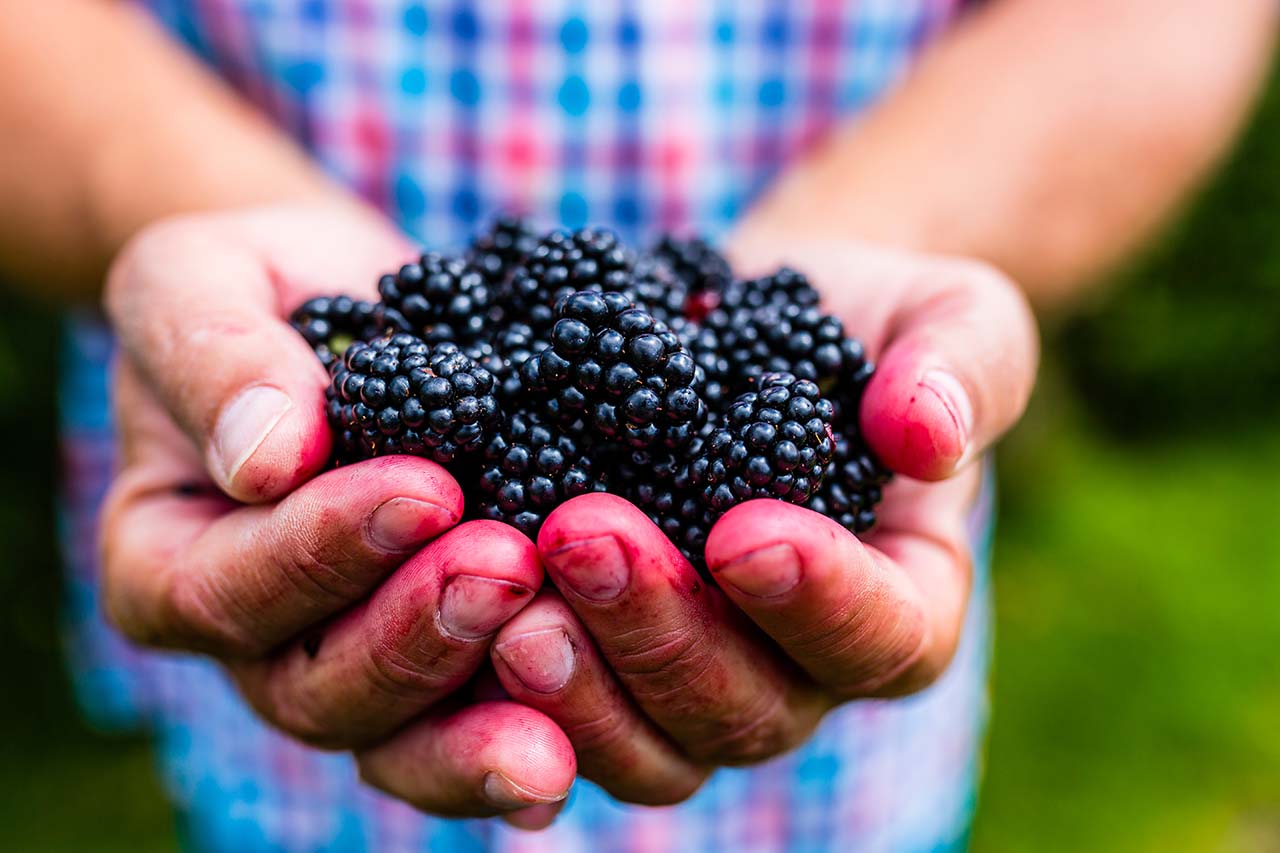
Blackberry for Diabetes
Although more research is needed to fully understand how blackberries affect human metabolism, their anti-inflammatory properties and ability to support organ health make them a promising natural ally in managing diabetes. A recent study offers encouraging results, especially for individuals at risk of obesity-related metabolic issues. In a controlled trial, overweight men who consumed 600 grams of blackberries daily for one week showed improved fat metabolism and reduced insulin resistance. While their blood sugar levels remained steady, their bodies required less insulin—an indication of improved glucose regulation. The researchers also noted that blackberry consumption encouraged the body to burn more fat for energy, a potential benefit for those dealing with weight-related blood sugar challenges.25
While blackberries may not replace insulin therapy, they offer meaningful support for metabolic health and could be a valuable addition to a comprehensive diabetes management plan.
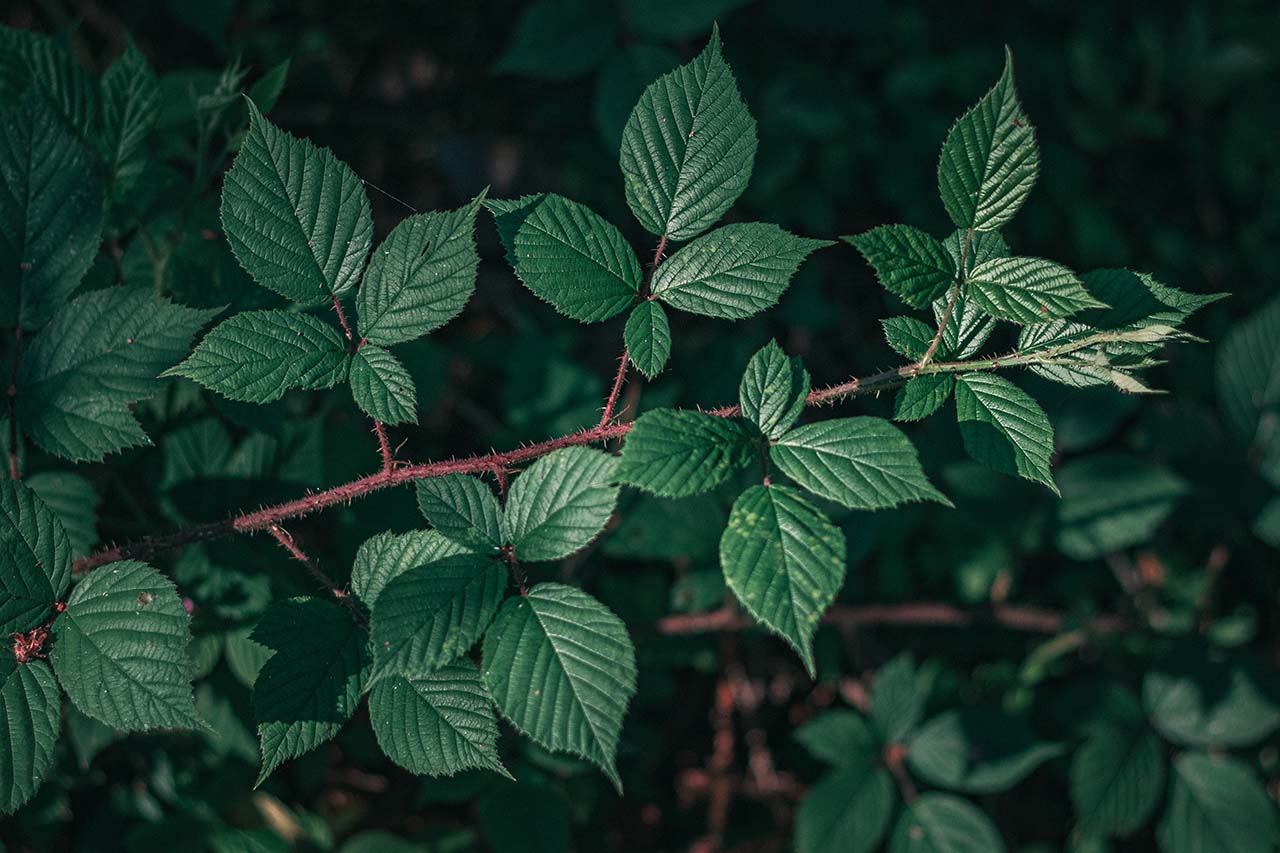
Blackberry as an Antibiotic and an Antiviral
Blackberries are more than just a flavorful fruit—they’re packed with health benefits, prompting researchers to explore how these berries, along with relatives like raspberries, can complement everyday foods to enhance wellness in surprising ways.
For instance, researchers have studied how blackberry and raspberry extracts enhance the health benefits of honey, discovering that blackberry leaves contain the highest levels of antioxidants, even more than the fruits themselves. When mixed with honey, these plant extracts boosted its antioxidant power by up to five times, while also improving its antibacterial effects—particularly against Staphylococcus aureus, a common cause of infections. The enriched honey even showed antiviral activity against a coronavirus surrogate, making it a promising natural remedy and a new kind of functional food.26
Beyond honey, blackberries have shown direct antimicrobial properties. Researchers analyzing blackberry fruit extracts identified bioactive compounds that effectively fought Enterococcus faecalis, Bacillus cereus, and Escherichia coli—bacteria linked to foodborne illnesses.27 Blackberry and raspberry leaf buds also proved to be strong antibacterial agents, particularly against Staphylococcus aureus and Enterococcus faecalis, suggesting their potential for use in medicine, food preservation, and even skincare.28
Other studies have examined blackberry leaf extracts for their antibacterial effects against both gram-positive (Staphylococcus aureus, Enterococcus faecalis) and gram-negative bacteria (Escherichia coli, Haemophilus influenzae). These findings align with the traditional use of blackberries as a natural remedy for infections and highlight their potential for broader medicinal applications.29
Helicobacter pylori
As antibiotic resistance rises and access to treatments becomes more limited, the demand for effective alternatives intensifies. In 2009, a team of scientists offered a glimmer of hope, reporting that blackberry could provide a natural approach to combating Helicobacter pylori, the bacterium behind stomach ulcers. In the study, researchers tested leaf extracts from Rubus ulmifolius, a type of blackberry, against these bacteria, finding that the extracts effectively stopped the growth of both a highly aggressive strain and a milder one. Certain natural compounds in the plant stood out for their strong antibacterial effects, with one requiring only a small dose to wipe out H. pylori, while another worked especially well against the less aggressive strain. For the milder strain, the plant’s antioxidant and antibacterial effects worked together, unlike the tougher strain where they acted separately. This could mean that the plant’s compounds adapt to the specific challenge posed by each strain.30
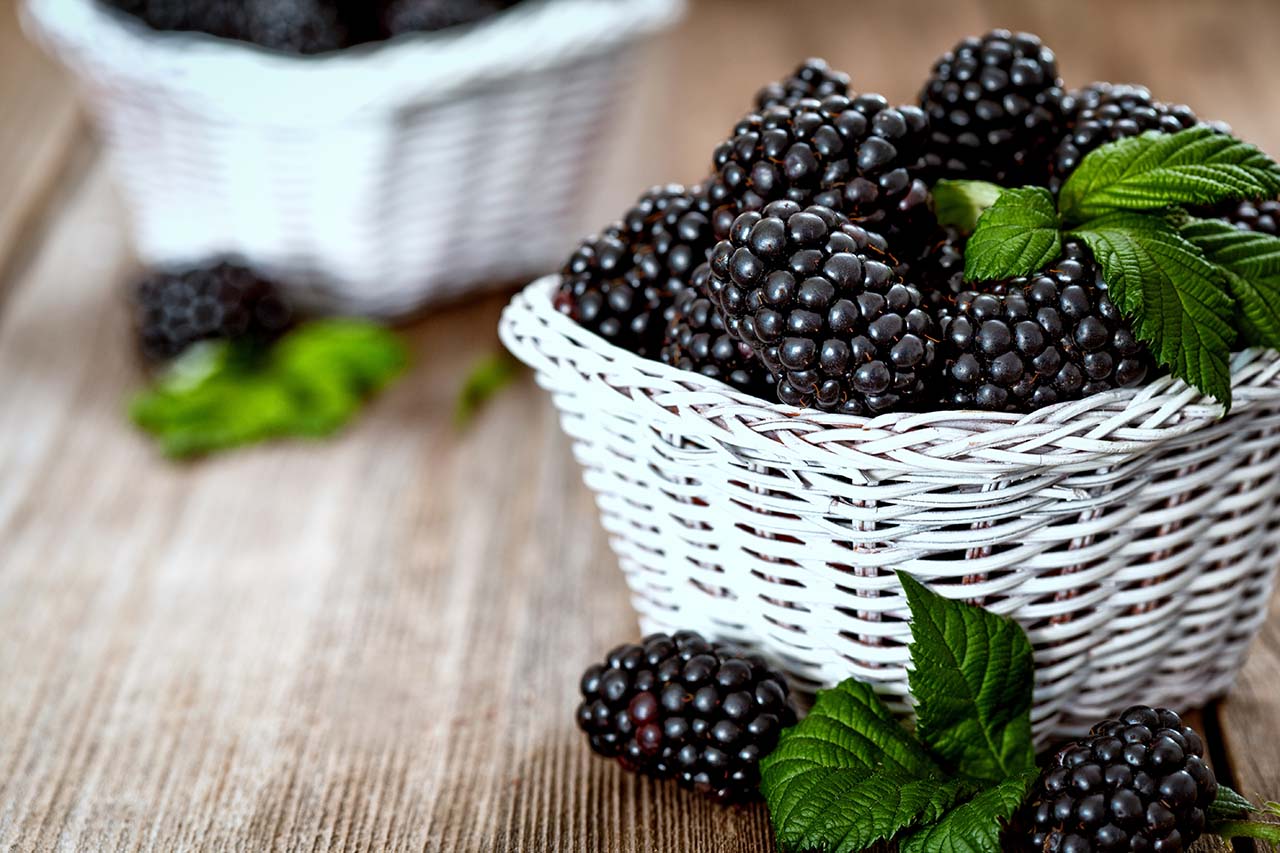
Blackberry as an Anti-inflammatory
Blackberries are known not just for their delicious taste, but also for their strong potential in reducing inflammation. A study examining six different blackberry cultivars found that one variety ("Kiowa") stood out for its high levels of antioxidants and anti-inflammatory properties. This was attributed to its rich content of flavonoids like quercitrin and luteolin, and anthocyanin compounds such as cyanidin. These compounds play a key role in reducing oxidative stress and inflammation, protecting cells, and supporting overall health.31
Further research on blackberry fruit extracts has uncovered the presence of ursane-type terpenoids and phenolic compounds, which exhibit strong antioxidant activity. These compounds were found to enhance antioxidant defenses, especially in human endothelial cells, highlighting the fruit’s potential in combating oxidative stress and inflammation.32
In addition to the fruit, blackberry seed flour extract, obtained through a cold-extraction method, also demonstrated notable anti-inflammatory effects. Key compounds, including ellagic acid, were found to reduce inflammation markers and slow the growth of prostate cancer cells, further highlighting blackberries’ potential anti-inflammatory benefits.33
Natural health experts, including Brigitte Mars, have long recommended blackberries for conditions like gout due to their potent anti-inflammatory properties.34 Whether through fresh fruit, extracts, or even seed flour, blackberries offer a range of therapeutic benefits that support the body’s natural defenses against inflammation.
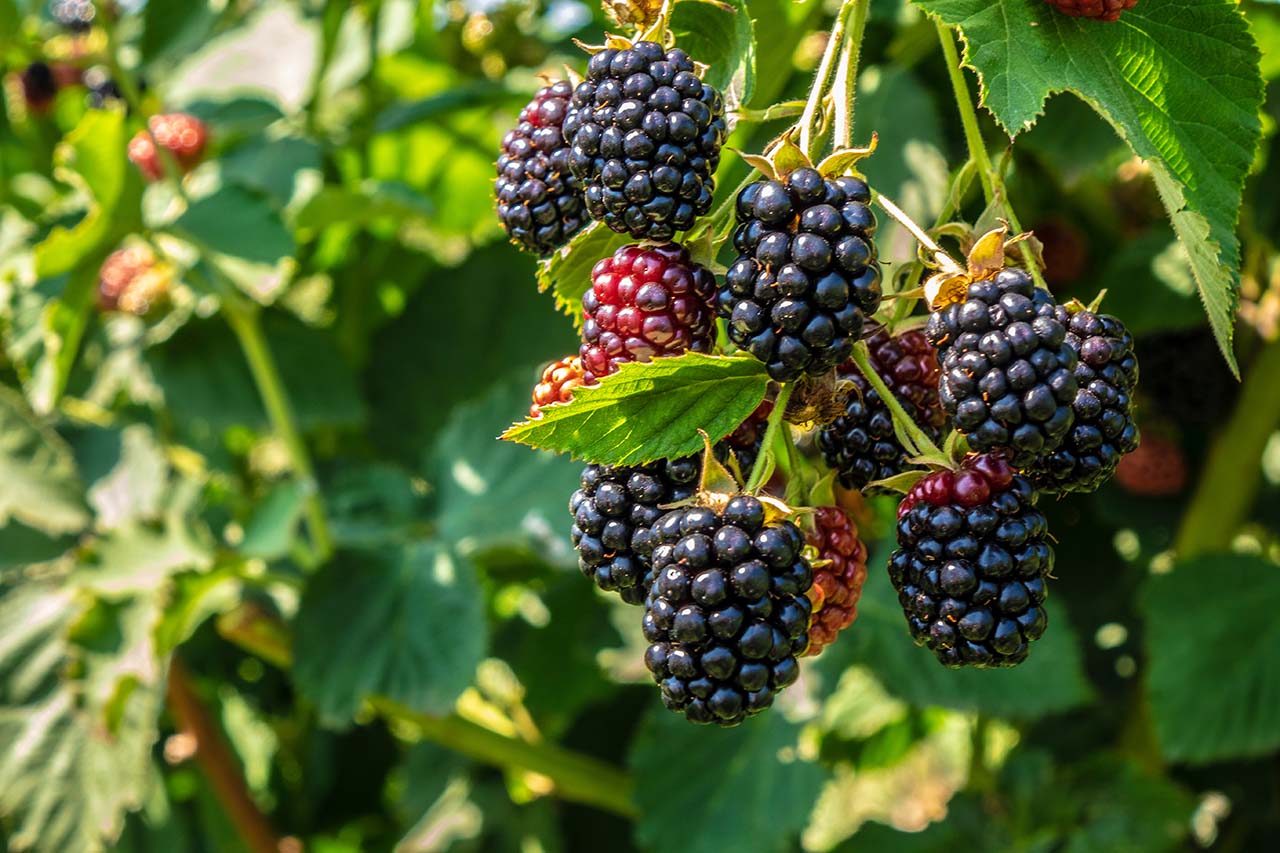
Blackberry for Oral Health
Blackberry has long been used in traditional remedies for mouth and gum issues, with modern science supporting its effectiveness due to the high tannin content in the plant. The astringent properties of blackberry leaves help create a barrier against infection, making them valuable for treating wounds, ulcers, and burns in the mouth. This also helps reduce irritation on tissue surfaces, often providing a numbing effect that brings relief.
Historically, herbalists like Culpeper recommended using fresh or dried blackberry leaves for treating mouth ulcers, while others suggested gargling with them to address scurvy-related gum problems.35,36 Additionally, there’s a popular belief that eating young blackberry shoots can help tighten loose teeth.37,38,39 Echoing these traditional uses, modern herbalist Brigitte Mars highlights that blackberry leaf is used as a mouthwash for sores and weak gums, underscoring its continued relevance in oral health today.40
In recent studies, blackberry extract has demonstrated impressive benefits for oral health. One study found that chewing gum infused with blackberry powder, combined with xylitol, effectively reduced oral bacteria, including those that cause cavities. This combination outperformed xylitol alone in reducing bacterial presence.41 Blackberry extract has also shown promising results in fighting the herpes simplex virus (HSV-1), which causes cold sores. The extract inhibited the virus from multiplying by over 99% and could be used topically as a natural antiviral remedy.42
Moreover, research has highlighted the antibacterial properties of blackberry extract against oral bacteria associated with gum diseases, such as Porphyromonas gingivalis and Fusobacterium nucleatum. One study showed that blackberry extract could kill F. nucleatum within an hour, without harming oral epithelial cells, making it a safe and effective option for gum health.43 These findings, coupled with the extract's anti-inflammatory effects, suggest that blackberry could be a powerful ally in oral care.
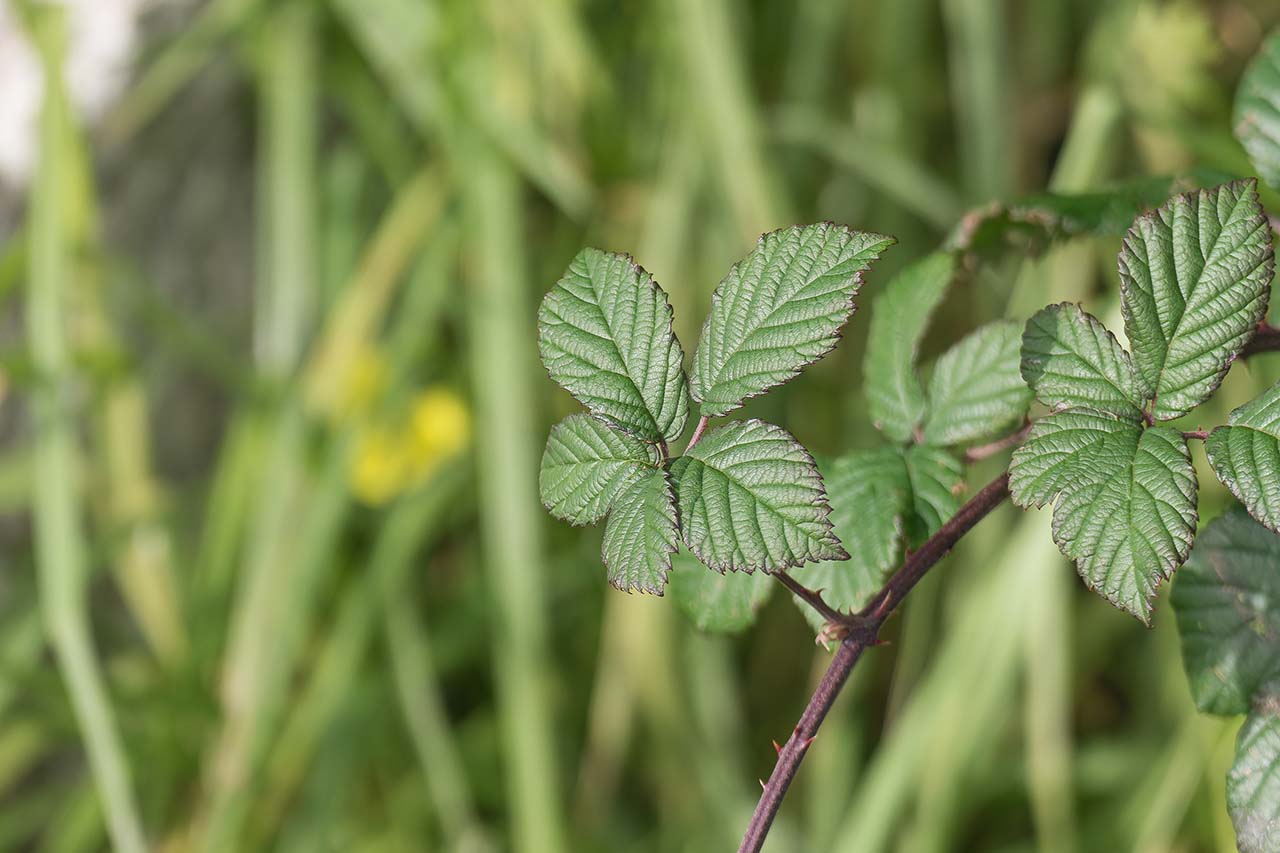
Blackberry for Heart and Circulatory Health
Blackberries, both in their fruit and flower form, have long been valued for their health benefits, particularly when it comes to supporting the circulatory system.
Modern studies confirm that blackberry polyphenols—particularly those found in the fruit—offer protective effects for the circulatory system. One study tested the potential of blackberry polyphenols in counteracting damage from e-cigarette exposure, which increases oxidative stress and harms blood vessel function by reducing nitric oxide (NO), essential for healthy circulation. The results showed that blackberries helped preserve NO levels and reduced oxidative damage in blood vessels, though they did not protect against heart or lung damage. This suggests that polyphenol-rich foods like blackberries may help mitigate vascular harm from environmental stressors, but further research is needed to fully understand their protective capacity.44
For specific conditions like vasculitis—an inflammation of the blood vessels—blackberry leaves have been recommended in combination with other herbs such as Centella Asiatica, Ginkgo Biloba, and Crataegus oxyacantha for general support.45
In The Earthwise Herbal, Matthew Wood references Juliette de Bairacli Levy, who highlights blackberry as an internal blood tonic for anemia.46 Notably, blackberry contains moderate iron levels and is considered safe during pregnancy, a time when anemia is common.
In short, blackberries play a significant role in supporting heart and circulatory health, from reducing oxidative stress in blood vessels to potentially aiding in the treatment of anemia and inflammation.
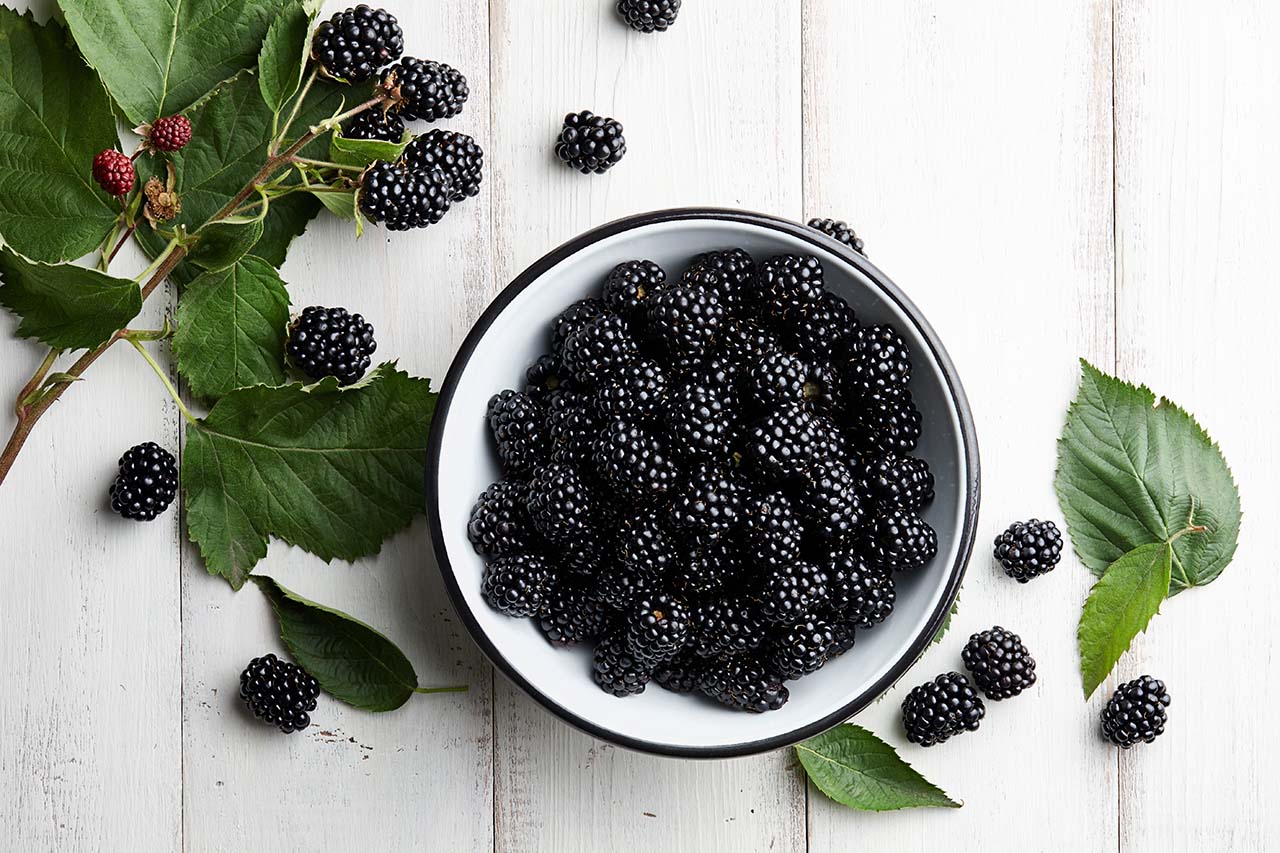
Blackberry for Skin Health
Blackberry offers numerous skin benefits, both as a topical treatment and when used internally.
Traditionally, blackberry leaves have been used to treat various skin conditions, including sores, itching, and ringworm, by being cooked in white wine and applied topically while still warm.47 The leaves are also known for their astringent properties, which help with injuries, as well as for reducing irritation and inflammation.48
As we age, our skin loses elasticity, leading to wrinkles and sagging. A study testing a combination of blackberry and dill extracts topically showed that blackberry extract helped boost elastin production and reduce its breakdown, improving the skin's elasticity and providing a natural way to maintain firmer, youthful skin.49
Blackberry leaves are also valued in herbal remedies for conditions like eczema and abscesses. In The Earthwise Herbal, Matthew Wood cites Dr. Juliette de Bairacli Levy, who recommended a hot blackberry lotion to treat abscesses—helping them ripen and open—while also noting its use for managing eczema.50 Additionally, the leaves can be applied as a poultice for insect bites or hemorrhoids to reduce pain and swelling, offering another natural option for skin care.51
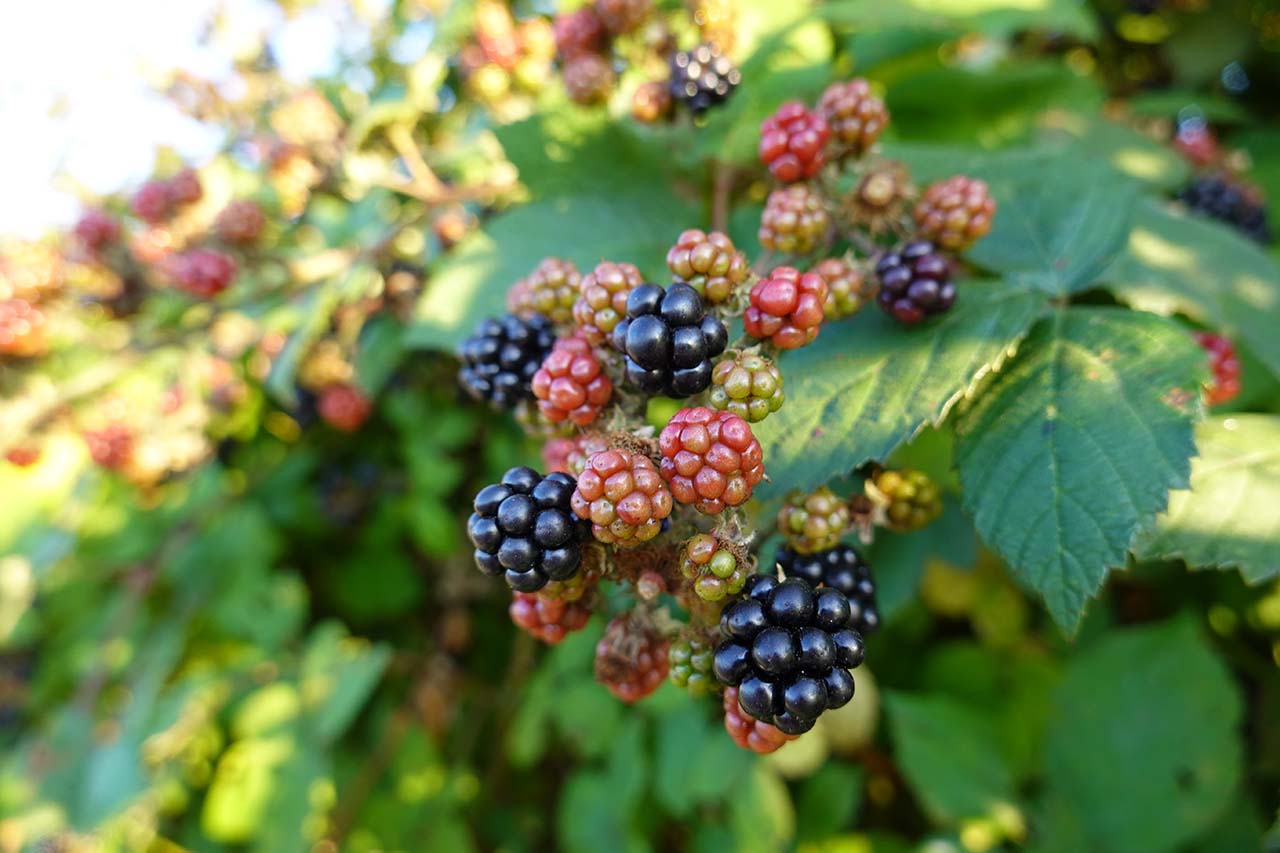
Blackberry for Reproductive Health
Blackberry, particularly its leaves and brambles, has been valued in traditional herbal medicine for its astringent properties, which help regulate excessive menstrual flow. The leaves are commonly used in a decoction to treat heavy menstrual bleeding by tightening blood vessels and reducing blood loss. Culpeper recommended the decoction of blackberry leaves for regulating menstrual flow, suggesting its use for "too much flowing of women’s courses."52
In The Earthwise Herbal, Volume II, Matthew Wood cites British herbalist John Hill, who recommends a syrup made from unripe blackberry fruit—picked when still red—to address “immoderate fluxes of the menses,” now commonly known as excessive menstrual bleeding or menorrhagia.53
In Practical Herbalism, Philip Fritchey cites John King, a prominent 19th-century American physician and herbalist, who suggested that for prolapsus uteri (uterine prolapse), blackberry could be used alone or paired with a decoction of equal parts black cohosh and blackberry roots, taken freely internally.54 Complementing this, blackberry leaves, valued for their pleasant taste, are noted in Indian Herbalogy of North America as helpful in managing excessive menstruation.55
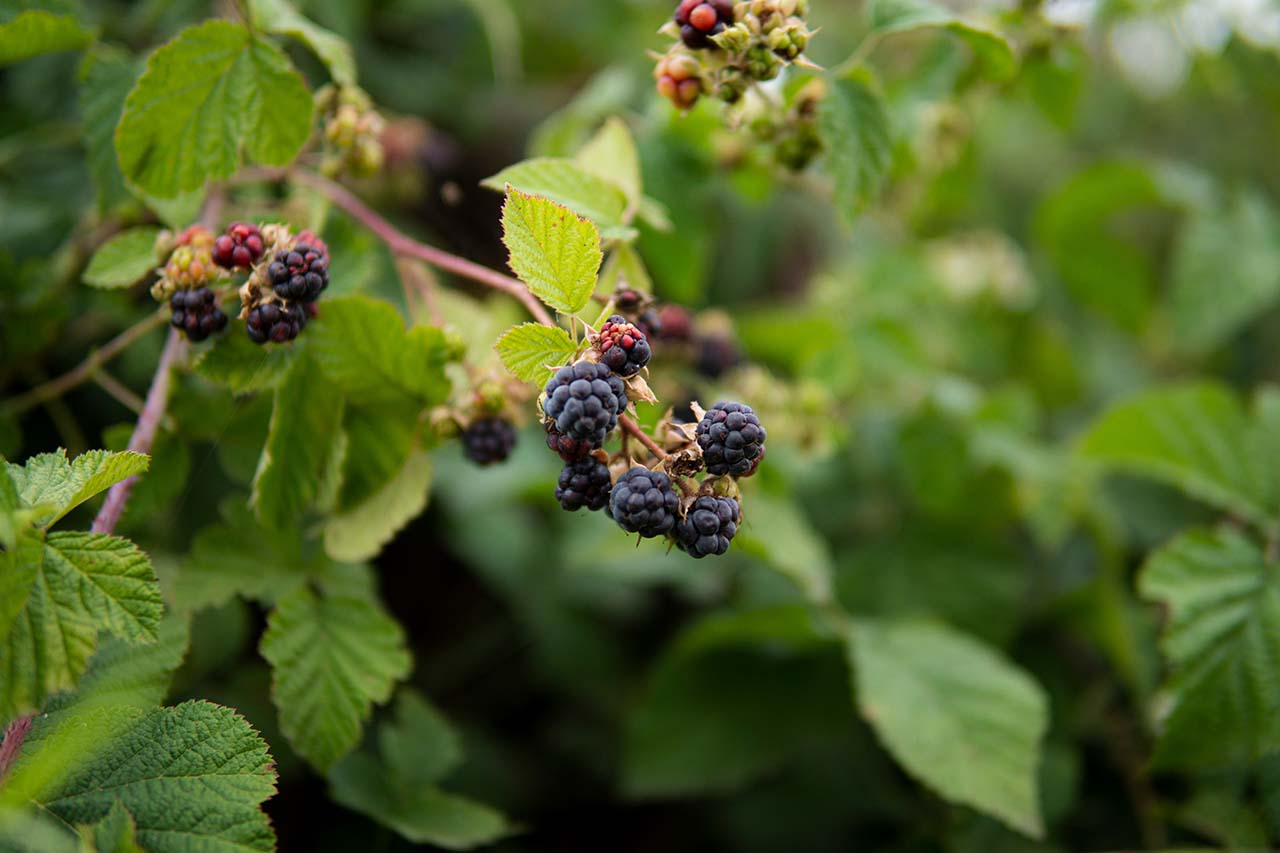
Blackberry for Urinary Health
While modern research hasn’t directly validated blackberry’s role in urinary health, this plant carries a deep-rooted legacy as a traditional remedy for kidney stones and gravel. Notably, the renowned herbalist Nicholas Culpeper recommended the root—prepared as a decoction or in powdered form—to help break down or expel deposits from the kidneys, which he termed "reins."56 Separately, the 18th-century German-American herbalist Christopher Sauer, known for his extensive work in documenting medicinal plants, emphasized blackberry’s application in treating kidney stones in children.57 Though these traditional uses lack robust contemporary evidence, they spotlight blackberry’s properties that may account for its historical prominence.
In the past, herbalists leaned on blackberry leaves and roots, often crafting them into teas or decoctions. These preparations likely drew out compounds like tannins, which could exert astringent effects to tone the urinary tract’s mucous membranes. The plant’s folk reputation might also rest on its combined antioxidant, anti-inflammatory, and diuretic qualities, making it a reasonable choice for supporting kidney function and managing gravel.
Blackberry’s phytochemical profile lends further credence to these historical claims. Its wealth of antioxidants—polyphenols, flavonoids, and vitamin C—combats oxidative stress linked to stone formation by mitigating renal cell damage and crystal adhesion. Anti-inflammatory compounds, such as ellagic acid and anthocyanins, may relieve urinary tract irritation, while trace amounts of citric acid could elevate urinary citrate to bind calcium, potentially hindering calcium oxalate stones. Moreover, its diuretic potential, driven by high water and potassium levels, might boost urine flow to dislodge small stones or gravel—a cleansing effect often praised in traditional remedies. Although direct scientific backing remains scarce, the interplay of blackberry’s chemical composition and its documented past offers a persuasive narrative for its traditional role in kidney health.
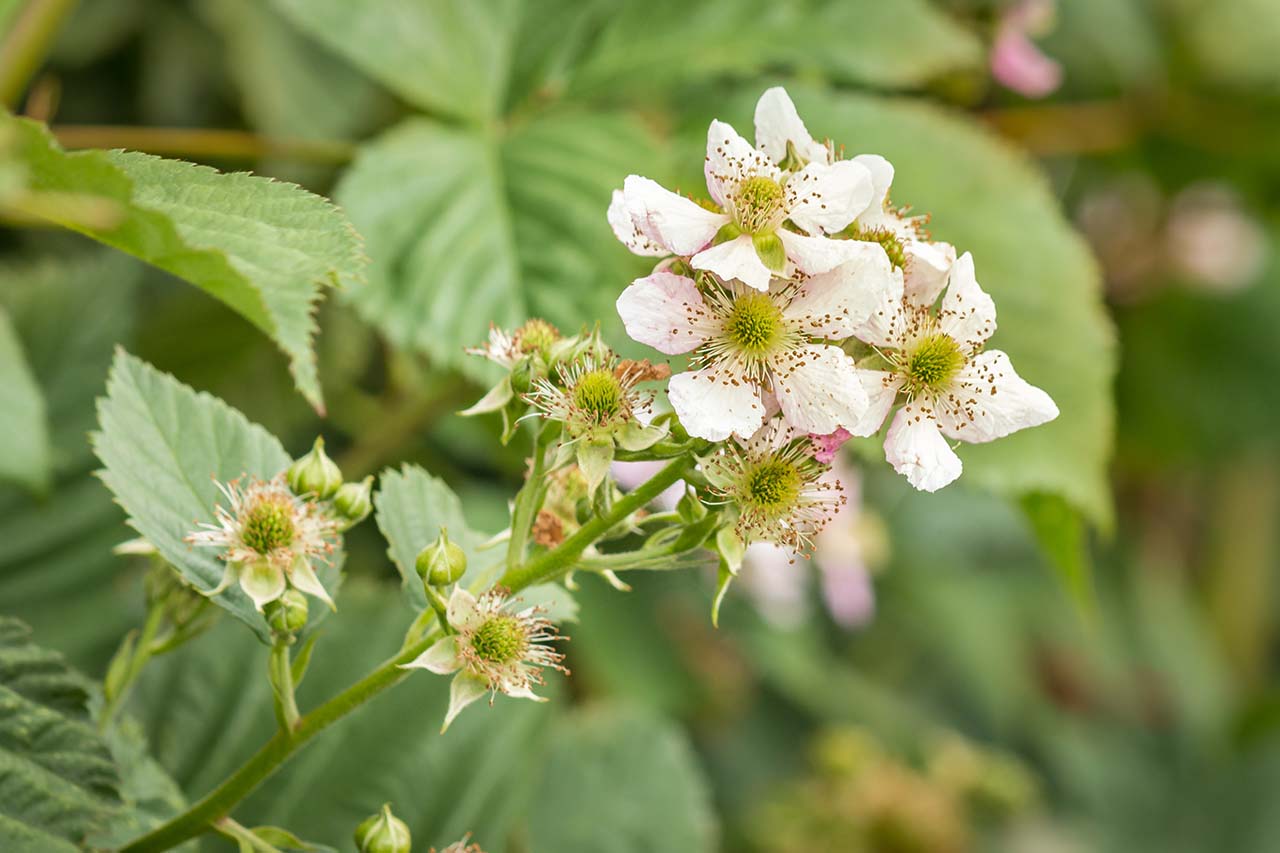
Blackberry for Respiratory Health and Fever Support
For centuries, traditional healers have turned to blackberry in various forms—its fruit, leaves, roots, and even distilled water—to help with respiratory ailments and fever recovery.
For instance, the juice of unripe red fruit, when reduced to a syrup-like consistency and dissolved in distilled water, has been used as a gargle to soothe a swollen throat, ease discomfort from burning mucus, and treat abscessed tonsils and glands.58 In some herbal traditions, blackberry is often combined with feverfew, hyssop, and oregano to support respiratory health, particularly for chest coughs. When boiled in wine with honey and taken after meals, this blend was believed to help clear mucus and promote lung recovery.59
Matthew Wood references both John Hill, a British herbalist, and Juliette de Bairacli Levy regarding blackberry’s respiratory benefits. Hill recommended a decoction of bramble (blackberry) leaves, boiled in spring water and sweetened with honey, to soothe sore throats. Likewise, Levy endorsed blackberry as a remedy for settling a cough.60
Blackberry vinegar is another valuable remedy for respiratory conditions. Maude Grieve noted its effectiveness for feverish colds, suggesting a teaspoon mixed with water as a refreshing drink to quench thirst during a fever. Additionally, a decoction of bruised blackberry root, boiled in water, was traditionally used to ease the spasmodic stage of whooping cough.61 Blackberry leaves can also be prepared as a gargle to relieve sore throats, further solidifying their role in respiratory care.62
The distilled water made from blackberry branches, leaves, flowers, or fruit is not only pleasantly flavored but also traditionally valued for its cooling and soothing properties. It has been used to reduce fevers and alleviate heat-related ailments affecting the body, head, and eyes. Both Culpeper and Alma R. Hutchens regarded it as beneficial for easing excessive internal heat, making it a useful remedy for inflammatory conditions.63,64
With such a broad range of applications, blackberry remains a versatile and time-honored herb for respiratory support and overall wellness.

Blackberry as Food
Blackberries are a cherished fruit wherever they grow, valued for their versatility and flavor. They can be savored raw—perhaps blended with sugar and cream, yogurt, or kefir—or crafted into a wide range of delights, including pies, cobblers, puddings, sauces, tarts, jams, jellies, syrups, cordials, liqueurs, wine, and brandy. Steve Brill highlights that their low sugar content makes them ideal for those sensitive to natural sugars, noting they pair beautifully with apples in nearly any dessert.65 In Canada, Indigenous peoples traditionally gathered blackberries in large quantities, eating them fresh or drying them for winter use. Common practices included mixing them with other berries, oil (sometimes whipped), or meat.66
Beyond the fruit, blackberry leaves offer their own appeal. When fermented using methods like those described for fireweed or combined with other herbs like bee balm, they can serve as a delightful “substitute for domestic tea.”67 In England, fruit wine is a popular homemade craft, often favoring wild fruits like blackberries, though any fruit will do. A quirky counterculture twist involves crafting psychedelic wine from freshly pressed forest berries, including blackberries, combined with Psilocybe semilanceata.68
Renowned for their health benefits and antioxidant properties, blackberries spoil quickly, prompting preservation through products like jam. A study of five commercial berry jams—blueberry, blackberry, blackcurrant, cranberry, and raspberry—examined their phenolic compounds, flavonoids, anthocyanins, and antioxidant activity. Despite some nutrient loss during processing, these jams retained significant antioxidant levels and nutritional value.69 Similarly, kefir—a fermented dairy drink celebrated for its health benefits but often critiqued for its sourness—gains a boost from blackberries. Researchers fortified kefir with encapsulated blackberry juice (EBJ) to preserve its nutrients, improving both flavor and antioxidant content. Stable for 28 days under refrigeration, this version offered natural color without artificial additives, with taste tests favoring higher blackberry concentrations—a promising innovation for the dairy industry.70 Whether savored fresh, preserved, or creatively reimagined, blackberries blend tradition,
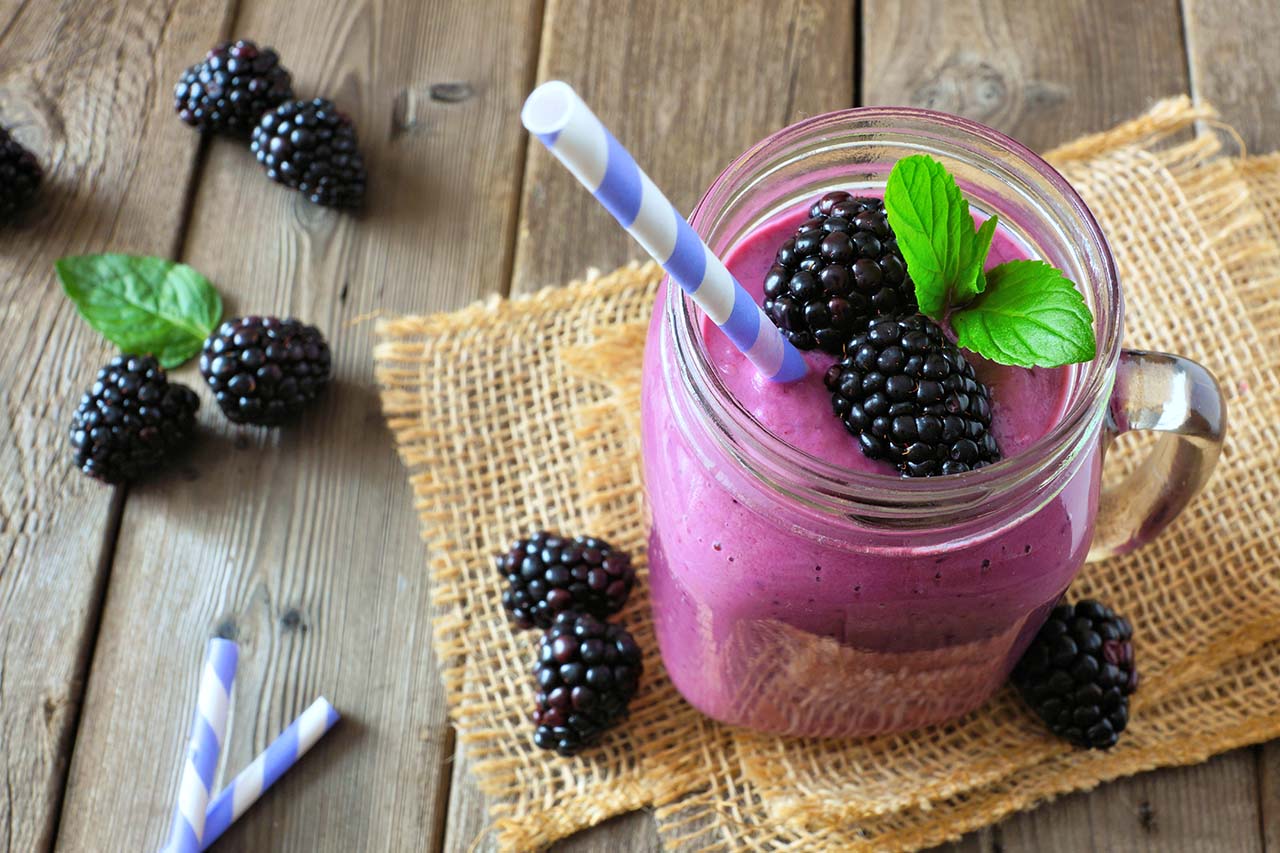
Blackberry Kefir Smoothie: A Delicious, Gut-Healthy Boost
While this smoothie skips the encapsulated blackberry juice (EBJ) used in research, fresh and frozen blackberries still deliver robust benefits, making this drink both tasty and nourishing. Combining fresh and frozen blackberries creates a thick, refreshing texture while locking in the fruit’s potent properties. Sip this nutrient-packed smoothie for breakfast, a quick snack, or a post-workout lift.
Ingredients
- 1 cup milk kefir
- ½ cup fresh blackberries
- ½ cup frozen blackberries
- Sweetener of choice (optional)
- Optional add-ins: chia or flax seeds, powdered herbs, or a drizzle of flaxseed oil for an omega-3 boost
Instructions
- Blend all ingredients until smooth.
- Toss in optional add-ins for a nutrient kick.
- Enjoy right away or chill briefly in the fridge.
Drink it fresh! The natural sugars in blackberries can degrade over time, potentially diminishing kefir’s probiotic punch.
Fun twist: swap kefir for yogurt or freeze the mixture in molds for delicious, healthy popsicles!

Blackberry Constituents, Vitamins, and Minerals
Blackberries are highly nutritious, offering a wealth of essential vitamins and minerals. They are rich in vitamins A and C and provide potassium, magnesium, calcium, iron, and phosphorus.71
Building on this, vitamin C plays a key role in collagen synthesis and immune function while vitamin K, which is also present, is essential for blood clotting and bone health. Among minerals, potassium supports electrolyte balance and nerve signaling, and manganese helps combat oxidative stress. Magnesium and iron further contribute to the body's essential functions, making blackberries not only nutritious but also a flavorful and functional addition to a healthy diet.
Beyond their nutrition, blackberries are packed with powerful plant compounds. Their deep color comes from anthocyanins, antioxidants that help fight free radicals, reduce inflammation, and support vision. Ellagic acid, another key compound, has strong anti-inflammatory and anticancer properties. Blackberries also contain lignans, which support heart and liver health, protect against UV damage, and aid in metabolism.72
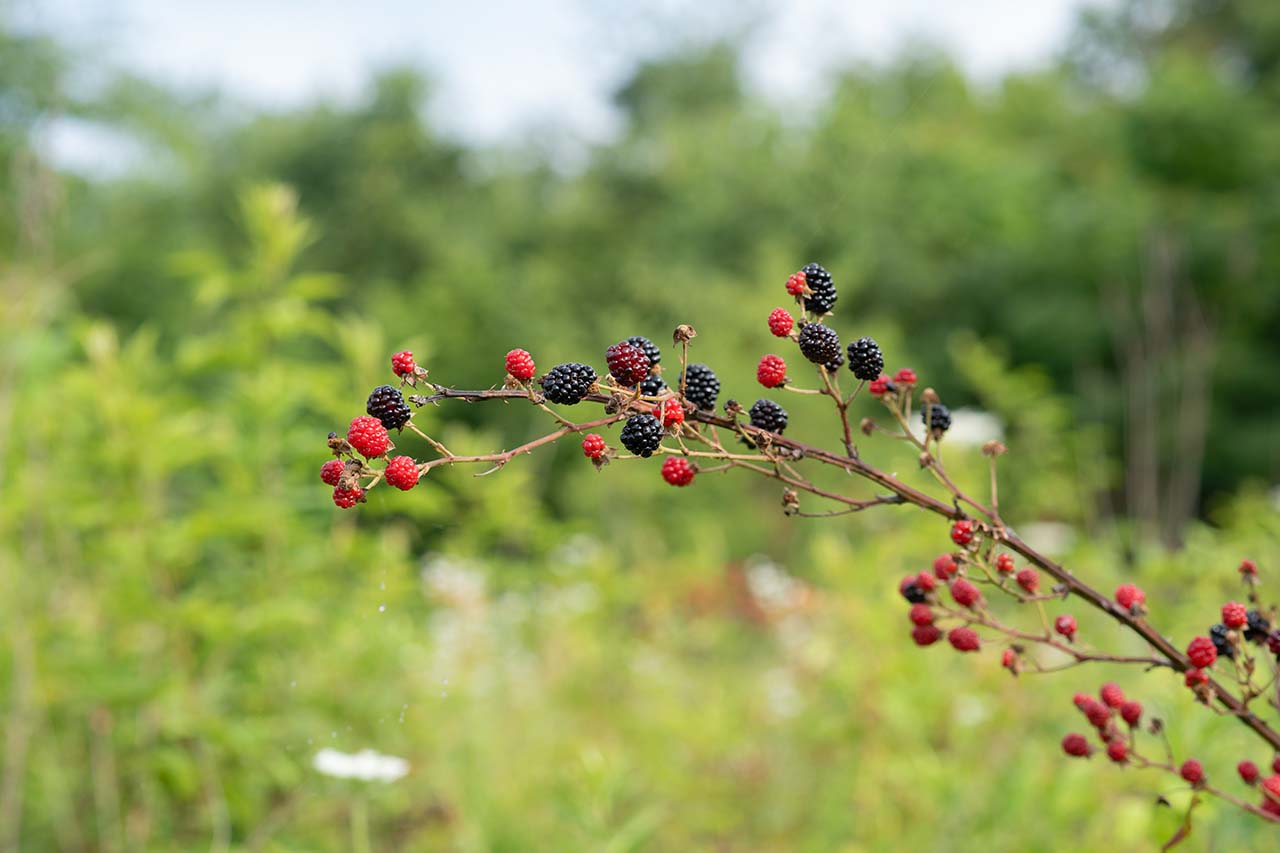
Botanically Speaking
Blackberry, part of the Rubus genus in the Rosaceae family alongside roses and strawberries, is a woody perennial known for its adaptability. Species like Rubus fruticosus feature biennial canes—primocanes in year one, fruit-bearing floricanes in year two—armed with prickles (not true thorns) for defense and climbing. Their leaves are serrated and compound while late spring to early summer flowers, with five white-to-pink petals, form an aggregate fruit of drupelets, each with a seed, rather than a single berry.
Ecologically, blackberry thrives in temperate regions across North America, Europe, and Asia, favoring sun but tolerating shade and varied soils. Spreading via arching canes or rhizomes, they form dense, brambly thickets, acting as pioneer species in disturbed areas and sometimes becoming invasive. Their seeds exhibit dormancy, requiring scarification or cold stratification to germinate successfully. Botanists note that blackberry plays a key role in succession, stabilizing soil while offering nectar for pollinators like bees and food for wildlife, solidifying their status as a keystone species in many ecosystems.
People sometimes mistake blackberry leaves for poison ivy, but blackberry leaves have toothed edges, while poison ivy leaves are always smooth and untoothed.73
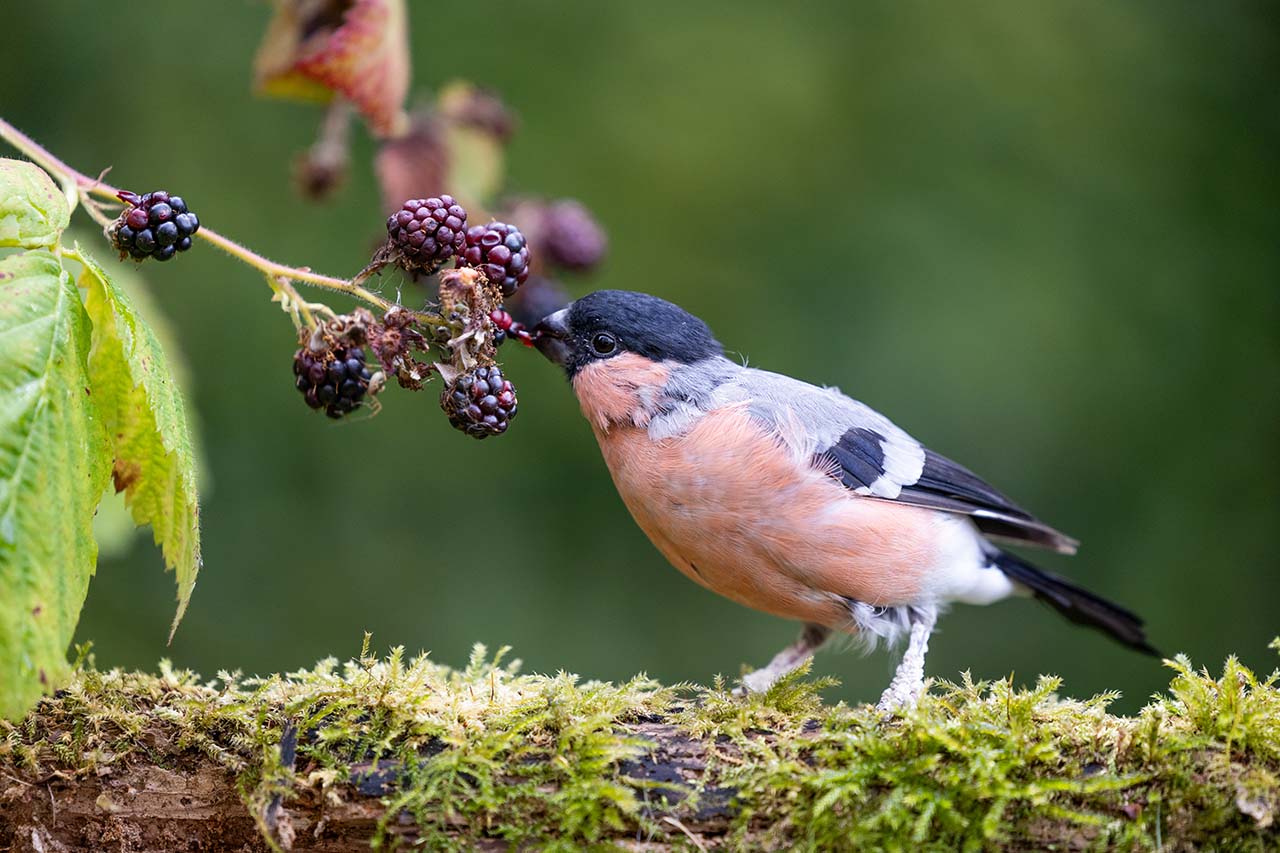
Ecology, Habitat, and Natural Connections for Blackberry Plants
Blackberry plants thrive across a wide range of ecological settings, showcasing their adaptability and resilience in temperate regions. They flourish in diverse habitats—woodlands, forest edges, disturbed roadsides, fields, soggy ditches, dry wastelands, hedgerows, and even abandoned urban areas—demonstrating an ability to grow almost anywhere, regardless of conditions that might challenge other plants.74 While it favors well-drained, slightly acidic soils rich in organic matter and basks in open, sunny spots where it forms dense, thorny thickets, blackberry can also tolerate poor soils and partial shade:, its deep root systems anchoring it to the earth and bolstering soil health and watershed stability.
These hardy plants weave vital connections into their ecosystems. Their juicy berries nourish an array of wildlife—birds, foxes, and mammals feast on the fruit, aiding seed dispersal, while deer graze on the leaves. The white or pink blossoms draw a host of pollinators, from bees to butterflies, ensuring reproduction and boosting biodiversity. Beyond sustenance, the prickly thickets provide shelter and nesting havens for small animals, intertwining blackberry with the broader web of life and underscoring their ecological significance.
Blackberries, noted for their hardiness and versatility, thrive in diverse conditions with late blooms that avoid spring frosts and virus-resistant varieties that resist most pests and diseases, historically harvested wild for street sales as Sauer observed, though urban limitations today make backyard cultivation rewarding.75 Available in upright, semi-upright, or trailing forms, blackberries have hardy roots but less resilient canes that may die back in cold winters, requiring early spring planting in sunny, well-drained, loamy soil (pH 5.5-6.5), spaced 3-6 feet apart with trellises for trailing types, consistent watering, late winter pruning to 5-7 strong canes, and light spring fertilization.76 Throughout summer, fresh leaves and ripe berries can be harvested, with tender young roots collected in fall, avoiding tough, woody rootstalks.77
An old tale warns against eating blackberries after October 11, claiming sprites spoil them with spit, but in truth, cooler weather and mold typically diminish their quality by then.78
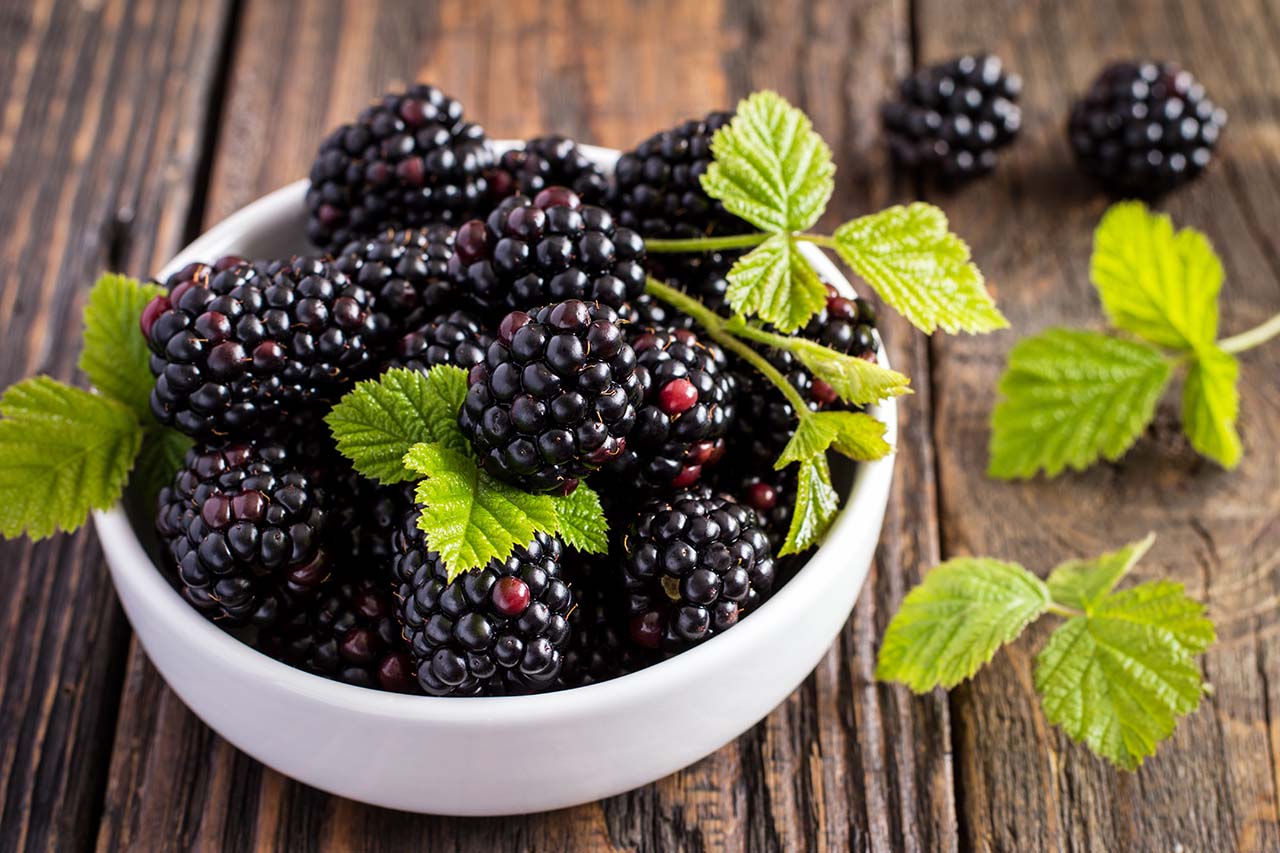
Recommended doses
Leaf
- Tea: 1 oz (30 g) to pint (500 ml) boiling water, infuse 15 min; take cold, a teacupful at a time79
- Tincture: Follow the standard guidelines for preparing tinctures; take 1-2 teaspoons 3 times daily80
Root
- Infusion: Add 4 ounces powdered or roughly ground root to a jar; add 1 quart of very hot water, cover and steep; drink over the next day, repeat daily81
- Decoction: 4 ounces blackberry root to 1 quart of water; boil until the water is reduced by half; consume in equal parts throughout the day; repeat daily82
- Syrup: 2 ounces of blackberry root simmer in 1 pint (500 ml) distilled water; strain and press; add 1 pound of sugar and dissolve completely; to the syrup add 1 ½ ounces of brandy83
- Tincture: fresh root (1:2, 80% alcohol, 10% glycerin); dried root (1:5, 50% alcohol); take 1–3 ml (0.2–0.6 tsp.) up to 4 times a day84
Berries
Blackberry fruits have a mild effect and are often used as food or gentle medicine with less emphasis on strict dosing. Margaret Grieve mentions their use in jelly, cordial, or wine for restorative benefits with no specific dosage beyond typical dietary amounts.85 Their safety in food-like quantities makes them less restrictive, though excessive consumption (e.g., several cups daily) may loosen stools.
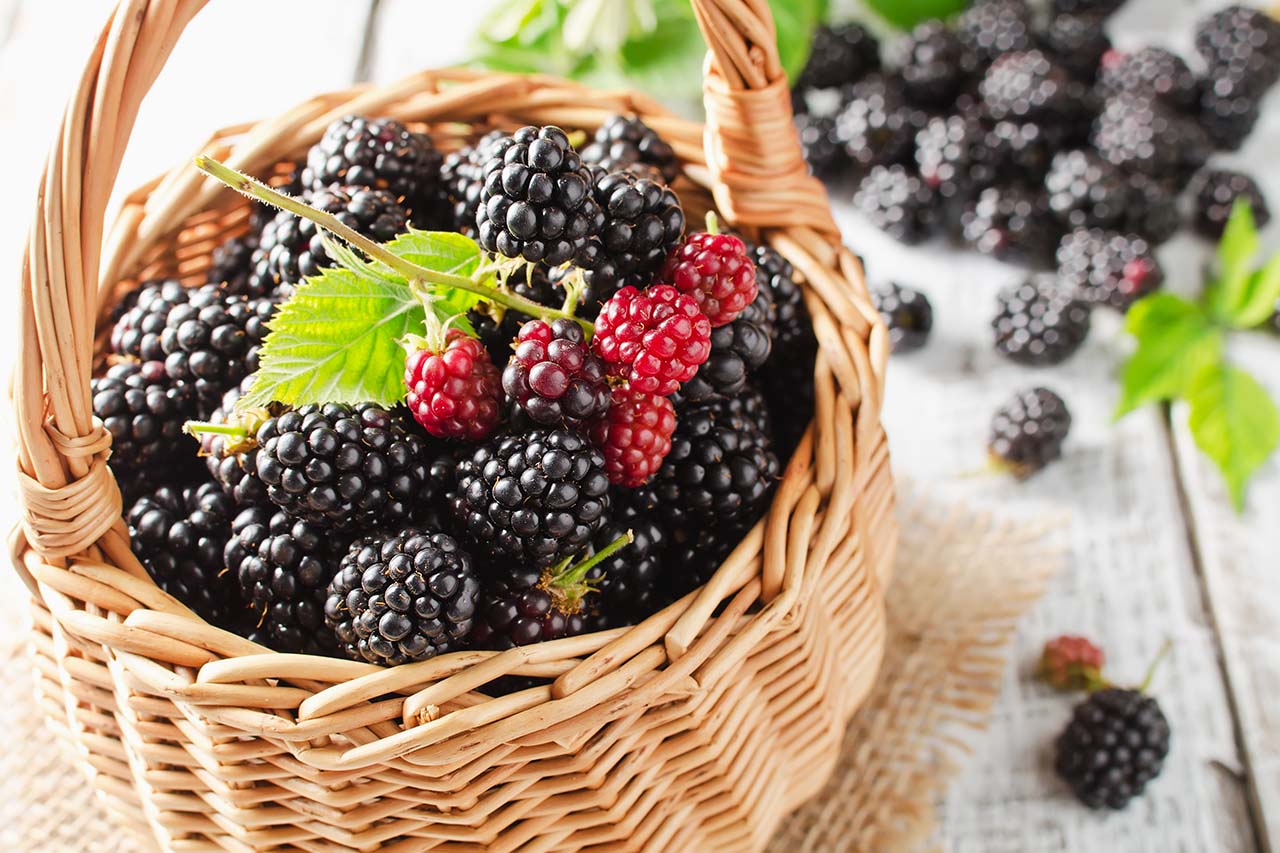
Special Considerations
Blackberry and its parts come with cautions. Overeating the berries may lead to constipation or diarrhea and could suppress menstrual bleeding while the high tannin content in the leaves and roots might upset sensitive stomachs, causing nausea or vomiting.86 Additionally, the tannic acid in the leaves can hinder mineral absorption from other foods, so prolonged use in therapeutic doses is not recommended.
The Botanical Safety Handbook also notes: “No information on the safety of blackberry leaf during lactation was identified in the scientific or traditional literature. While this review did not identify any concerns for use while nursing, safety has not been conclusively established.”87 Blackberry is astringent and tonifying, but it does not share raspberry leaf’s long-standing traditional use for preparing the uterus for labor. However, as with other tonifying astringent herbs, using it in amounts beyond normal food intake during pregnancy should be discussed with a qualified practitioner.
Beyond digestion, blackberry—especially their tannin-rich leaves and roots—may strain the kidneys by binding minerals and reducing absorption. Their oxalic acid content could also increase the risk of kidney stones in susceptible individuals. Dehydration further heightens these concerns by concentrating urine and amplifying the berries’ diuretic effect, potentially overtaxing the kidneys.88,89
It’s important to note that during the wilting process, blackberry leaves undergo chemical changes that may lead to stomach discomfort. Opting for fresh, tender leaves or those that are fully dried can help avoid any issues.90,91
Footnotes
-
Richard Folkard, Plant Lore, Legends, and Lyrics (London: Sampson Low, Marston, Searle & Rivington, 1884), 258.
-
Brigitte Mars, Desktop Guide to Herbal Medicine: The Ultimate Multidisciplinary Reference to the Amazing Realm of Healing Plants, in a Quick-Study, One-Stop Guide (Boulder, CO: Basic Health Publications, 2007), 51.
-
Richard Folkard, Plant Lore, Legends, and Lyrics (London: Sampson Low, Marston, Searle & Rivington, 1884), 258.
-
Nicholas Culpeper, The Complete Herbal & English Physician (Bedford, MA: Applewood Books, 2007), 27.
-
Nicholas Culpeper, The Complete Herbal & English Physician (Bedford, MA: Applewood Books, 2007), 27.
-
Ibid.
-
Daniel E. Moerman, Native American Ethnobotany (Portland, OR: Timber Press, 1998), 488.
-
Daniel E. Moerman, Native American Ethnobotany (Portland, OR: Timber Press, 1998), 487.
-
Philip Fritchey, Practical Herbalism: Ordinary Plants with Extraordinary Powers (Warsaw, IN: Whitman Publications, 2005), 261.
-
Thomas Easley and Steven Horne, The Modern Herbal Dispensatory: A Medicine-Making Guide (Berkeley, CA: North Atlantic Books, 2016), 187.
-
Alma R. Hutchens, Indian Herbalogy of North America: The Definitive Guide to Native Medicinal Plants and Their Uses (Boston: Shambhala Publications, 1991), 45.
-
Brigitte Mars, Desktop Guide to Herbal Medicine: The Ultimate Multidisciplinary Reference to the Amazing Realm of Healing Plants, in a Quick-Study, One-Stop Guide (Boulder, CO: Basic Health Publications, 2007), 51.
-
Ukseong Choe, Yanfang Li, Liangli Yu, Boyan Gao, Thomas T. Y. Wang, Jun Sun, Pei Chen, and Lu Yu, “Chemical composition of cold-pressed blackberry seed flour extract and its potential health-beneficial properties,” Food Science & Nutrition 8, no. 2 (2020): 1215, https://doi.org/10.1002/fsn3.1410.
-
Stephen Harrod Buhner, Herbal Antivirals: Natural Remedies for Emerging & Resistant Viral Infections, 2nd ed. (North Adams, MA: Storey Publishing, 2021), 108, 128.
-
David Hoffmann, Medical Herbalism: The Science and Practice of Herbal Medicine (Rochester, VT: Healing Arts Press, 2003), 497.
-
Margaret Grieve, A Modern Herbal (Volume 1, A-H): The Medicinal, Culinary, Cosmetic and Economic Properties, Cultivation and Folk-Lore of Herbs, Grasses, Fungi, Shrubs & Trees with Their Modern Scientific Uses (New York: Dover Publications, 1971), 110.
-
Hildegard of Bingen, Hildegard von Bingen's Physica: The Complete English Translation of Her Classic Work on Health and Healing, trans. Priscilla Throop (Rochester, VT: Healing Arts Press, 1998), 79.
-
Ibid.
-
Ibid.
-
Jing Wang, Fei Zhao, Wei Wu, Lianfei Lyu, Wei Li, and Chunjian Zhang, “Ellagic acid from hull blackberries: Extraction, purification, and potential anticancer activity,” International Journal of Molecular Sciences 24, no. 20 (2023): 15228, https://doi.org/10.3390/ijms242015228.
-
Lidia Gil-Martínez, Nuria Mut-Salud, José Antonio Ruiz-García, Alberto Falcón-Piñeiro, Maria Maijó-Ferré, Antonio Baños, José Manuel De la Torre-Ramírez, Eva Guillamón, Vito Verardo, and Ana María Gómez-Caravaca, “Phytochemicals determination, and antioxidant, antimicrobial, anti-inflammatory and anticancer activities of blackberry fruits,” Foods (Basel, Switzerland) 12, no. 7 (2023): 1505, https://doi.org/10.3390/foods12071505.
-
Karam El-Bayoumy, Yuan-Wan Sun, Neil M. Krebs, Lisa Reinhart, Dongxiao Sun, Joshua Liao, Roberta Cook, Philip E. Bond, Susan R. Mallery, and Kun-Ming Chen, “The effects of black raspberry as a whole food-based approach on biomarkers of oxidative stress in buccal cells and urine of smokers,” Cancer Prevention Research (Philadelphia, Pa.) 17, no. 4 (2024): 157–167, https://doi.org/10.1158/1940-6207.CAPR-23-0153.
-
Navindra P. Seeram, Lynn S. Adams, Yanjun Zhang, Rupo Lee, Daniel Sand, Harold S. Scheuller, and David Heber, “Blackberry, black raspberry, blueberry, cranberry, red raspberry, and strawberry extracts inhibit growth and stimulate apoptosis of human cancer cells in vitro,” Journal of Agricultural and Food Chemistry 54, no. 25 (2006): 9329–9339, https://doi.org/10.1021/jf061750g.
-
Emma M. Coates, Gina Popa, Chris I. R. Gill, Michelle J. McCann, Gordon J. McDougall, Derek Stewart, and Ian Rowland, “Colon-available raspberry polyphenols exhibit anti-cancer effects on in vitro models of colon cancer,” Journal of Carcinogenesis 6 (2007): 4, https://doi.org/10.1186/1477-3163-6-4.
-
Patrick M. Solverson, William V. Rumpler, Jayme L. Leger, Benjamin W. Redan, Mario G. Ferruzzi, David J. Baer, Thomas W. Castonguay, and Janet A. Novotny, “Blackberry feeding increases fat oxidation and improves insulin sensitivity in overweight and obese males,” Nutrients 10, no. 8 (2018): 1048, https://doi.org/10.3390/nu10081048.
-
Dorota Grabek-Lejko, Michał Miłek, Ewelina Sidor, Czesław Puchalski, and Małgorzata Dżugan, “Antiviral and antibacterial effect of honey enriched with Rubus spp. as a functional food with enhanced antioxidant properties,” Molecules (Basel, Switzerland) 27, no. 15 (2022): 4859, https://doi.org/10.3390/molecules27154859.
-
Lidia Gil-Martínez, Nuria Mut-Salud, José Antonio Ruiz-García, Alberto Falcón-Piñeiro, Maria Maijó-Ferré, Antonio Baños, José Manuel De la Torre-Ramírez, Eva Guillamón, Vito Verardo, and Ana María Gómez-Caravaca, “Phytochemicals determination, and antioxidant, antimicrobial, anti-inflammatory and anticancer activities of blackberry fruits,” Foods (Basel, Switzerland) 12, no. 7 (2023): 1505, https://doi.org/10.3390/foods12071505.
-
Anna Krzepiłko, Renata Prażak, and Agnieszka Święciło, “Chemical composition, antioxidant and antimicrobial activity of raspberry, blackberry and raspberry-blackberry hybrid leaf buds,” Molecules (Basel, Switzerland) 26, no. 2 (2021): 327, https://doi.org/10.3390/molecules26020327.
-
Afaf M. Weli, Hanady S. Al-Saadi, Rouqaya S. Al-Fudhaili, Amzad Hossain, Zabida Binti Putit, and Mahmood K. Jasim, “Cytotoxic and antimicrobial potential of different leaves extracts of R. fruticosus used traditionally to treat diabetes,” Toxicology Reports 7 (2020): 183–187, https://doi.org/10.1016/j.toxrep.2020.01.006.
-
Silvia Martini, Claudia Bonechi, Claudio Rossi, and Natale Figura, “Inhibition of Helicobacter pylori by wild blackberry extracts and their constituents,” Microbiological Research 164, no. 6 (2009): 650–658, https://doi.org/10.1016/j.micres.2009.02.005.
-
Hyeonjeong Lee, Ziyun Wang, Zilong Deng, and Yan Wang, “Assessment of six blackberry cultivars using a combination of metabolomics, biological activity, and network pharmacology approaches,” Antioxidants (Basel, Switzerland) 13, no. 3 (2024): 319, https://doi.org/10.3390/antiox13030319.
-
Lidia Gil-Martínez, Nuria Mut-Salud, José Antonio Ruiz-García, Alberto Falcón-Piñeiro, Maria Maijó-Ferré, Antonio Baños, José Manuel De la Torre-Ramírez, Eva Guillamón, Vito Verardo, and Ana María Gómez-Caravaca, “Phytochemicals determination, and antioxidant, antimicrobial, anti-inflammatory and anticancer activities of blackberry fruits,” Foods (Basel, Switzerland) 12, no. 7 (2023): 1505, https://doi.org/10.3390/foods12071505.
-
Ukseong Choe, Yanfang Li, Liangli Yu, Boyan Gao, Thomas T. Y. Wang, Jun Sun, Pei Chen, and Lu Yu, “Chemical composition of cold-pressed blackberry seed flour extract and its potential health-beneficial properties,” Food Science & Nutrition 8, no. 2 (2020): 1215–1225, https://doi.org/10.1002/fsn3.1410
-
Brigitte Mars, Desktop Guide to Herbal Medicine: The Ultimate Multidisciplinary Reference to the Amazing Realm of Healing Plants, in a Quick-Study, One-Stop Guide (Boulder, CO: Basic Health Publications, 2007), 51.
-
Nicholas Culpeper, The Complete Herbal & English Physician (Bedford, MA: Applewood Books, 2007), 27.
-
William Woys Weaver, Sauer's Herbal Cures (New York: Routledge, 2001), 63.
-
Margaret Grieve, A Modern Herbal (Volume 1, A-H): The Medicinal, Culinary, Cosmetic and Economic Properties, Cultivation and Folk-Lore of Herbs, Grasses, Fungi, Shrubs & Trees with Their Modern Scientific Uses (New York: Dover Publications, 1971), 110.
-
Matthew Wood, The Earthwise Herbal, Volume II: A Complete Guide to New World Medicinal Plants (Berkeley, CA: North Atlantic Books, 2009), 310.
-
Thomas Bartram, Bartram's Encyclopedia of Herbal Medicine (London: Robinson, 2013), 58.
-
Brigitte Mars, Desktop Guide to Herbal Medicine: The Ultimate Multidisciplinary Reference to the Amazing Realm of Healing Plants, in a Quick-Study, One-Stop Guide (Boulder, CO: Basic Health Publications, 2007), 51.
-
Craig S. Miller, Robert J. Danaher, Suman Kirakodu, Charles R. Carlson, and Russell J. Mumper, “Effect of chewing gum containing xylitol and blackberry powder on oral bacteria: A randomized controlled crossover trial,” Archives of Oral Biology 143 (2022): 105523, https://doi.org/10.1016/j.archoralbio.2022.105523.
-
Robert J. Danaher, Chunmei Wang, Jialiu Dai, Russell J. Mumper, and Craig S. Miller, “Antiviral effects of blackberry extract against herpes simplex virus type 1,” Oral Surgery, Oral Medicine, Oral Pathology, Oral Radiology, and Endodontics 112, no. 3 (2011): e31–e35, https://doi.org/10.1016/j.tripleo.2011.04.007.
-
Oscar A. González, Carlos Escamilla, Robert J. Danaher, Jialiu Dai, Jeffrey L. Ebersole, Russell J. Mumper, and Craig S. Miller, “Antibacterial effects of blackberry extract target periodontopathogens,” Journal of Periodontal Research 48, no. 1 (2013): 80–86, https://doi.org/10.1111/j.1600-0765.2012.01506.x.
-
Morgan L. Meister and Rafaela G. Feresin, “Blackberry consumption protects against e-cigarette-induced vascular oxidative stress in mice,” Food & Function 14, no. 24 (2023): 10709–10730, https://doi.org/10.1039/d3fo02217j.
-
Jill Stansbury, Herbal Formularies for Health Professionals, Volume 2: Circulation and Respiration, Including the Cardiovascular, Peripheral Vascular, Pulmonary, and Respiratory Systems (White River Junction, VT: Chelsea Green Publishing, 2018), 82.
-
Matthew Wood, The Earthwise Herbal, Volume II: A Complete Guide to New World Medicinal Plants (Berkeley, CA: North Atlantic Books, 2009), 310.
-
William Woys Weaver, Sauer's Herbal Cures (New York: Routledge, 2001), 63.
-
Thomas Easley and Steven Horne, The Modern Herbal Dispensatory: A Medicine-Making Guide (Berkeley, CA: North Atlantic Books, 2016), 187.
-
Diana Meza, Wen-Hwa Li, Inseok Seo, Ramine Parsa, Simarna Kaur, Milagros Kizoulis, and Michael D. Southall, “A blackberry-dill extract combination synergistically increases skin elasticity,” International Journal of Cosmetic Science 42, no. 5 (2020): 444–451, https://doi.org/10.1111/ics.12644.
-
Matthew Wood, The Earthwise Herbal, Volume II: A Complete Guide to New World Medicinal Plants (Berkeley, CA: North Atlantic Books, 2009), 310.
-
Brigitte Mars, Desktop Guide to Herbal Medicine: The Ultimate Multidisciplinary Reference to the Amazing Realm of Healing Plants, in a Quick-Study, One-Stop Guide (Boulder, CO: Basic Health Publications, 2007), 51.
-
Nicholas Culpeper, The Complete Herbal & English Physician (Bedford, MA: Applewood Books, 2007), 27.
-
Matthew Wood, The Earthwise Herbal, Volume II: A Complete Guide to New World Medicinal Plants (Berkeley, CA: North Atlantic Books, 2009), 309-310.
-
Philip Fritchey, Practical Herbalism: Ordinary Plants with Extraordinary Powers (Warsaw, IN: Whitman Publications, 2005), 260.
-
Alma R. Hutchens, Indian Herbalogy of North America: The Definitive Guide to Native Medicinal Plants and Their Uses (Boston: Shambhala Publications, 1991), 45.
-
Nicholas Culpeper, The Complete Herbal & English Physician (Bedford, MA: Applewood Books, 2007), 27.
-
William Woys Weaver, Sauer's Herbal Cures (New York: Routledge, 2001), 63.
-
William Woys Weaver, Sauer's Herbal Cures (New York: Routledge, 2001), 63.
-
Hildegard of Bingen, Hildegard von Bingen's Physica: The Complete English Translation of Her Classic Work on Health and Healing, trans. Priscilla Throop (Rochester, VT: Healing Arts Press, 1998), 79.
-
Matthew Wood, The Earthwise Herbal, Volume II: A Complete Guide to New World Medicinal Plants (Berkeley, CA: North Atlantic Books, 2009), 309-310.
-
Margaret Grieve, A Modern Herbal (Volume 1, A-H): The Medicinal, Culinary, Cosmetic and Economic Properties, Cultivation and Folk-Lore of Herbs, Grasses, Fungi, Shrubs & Trees with Their Modern Scientific Uses (New York: Dover Publications, 1971), 110.
-
Brigitte Mars, Desktop Guide to Herbal Medicine: The Ultimate Multidisciplinary Reference to the Amazing Realm of Healing Plants, in a Quick-Study, One-Stop Guide (Boulder, CO: Basic Health Publications, 2007), 51.
-
Nicholas Culpeper, The Complete Herbal & English Physician (Bedford, MA: Applewood Books, 2007), 27.
-
Alma R. Hutchens, A Handbook of Native American Herbs: The Pocket Guide to 125 Medicinal Plants and Their Uses (New York: Healing Arts Press, 1992), 32.
-
Steve Brill and Evelyn Dean, Identifying and Harvesting Edible and Medicinal Plants (New York: HarperCollins, 1994), 98.
-
Andy MacKinnon, Linda Kershaw, and John Arnason, Edible and Medicinal Plants of Canada (Edmonton: Lone Pine Publishing, 2016), 93.
-
Thomas Bartram, Bartram's Encyclopedia of Herbal Medicine (London: Robinson, 2013), 58.
-
Christian Rätsch, The Encyclopedia of Psychoactive Plants: Ethnopharmacology and Its Applications (Rochester, VT: Park Street Press, 2005), 799.
-
Zorica Diaconeasa, Cristian I. Iuhas, Huseyin Ayvaz, Dumitrița Rugină, Adela Stanilă, Francisc Dulf, Andrea Bunea, Sonia A. Socaci, Carmen Socaciu, and Adela Pintea, “Phytochemical Characterization of Commercial Processed Blueberry, Blackberry, Blackcurrant, Cranberry, and Raspberry and Their Antioxidant Activity,” Antioxidants (Basel, Switzerland) 8, no. 11 (2019): 540, https://pubmed.ncbi.nlm.nih.gov/31717652/.
-
Vanja Travičić, Olja Šovljanski, Ana Tomić, Milica Perović, Maja Milošević, Nebojša Ćetković, and Mirjana Antov, “Augmenting Functional and Sensorial Quality Attributes of Kefir through Fortification with Encapsulated Blackberry Juice,” Foods (Basel, Switzerland) 12, no. 22 (2023): 4163, https://pubmed.ncbi.nlm.nih.gov/38002220/
-
Steve Brill and Evelyn Dean, Identifying and Harvesting Edible and Medicinal Plants (New York: HarperCollins, 1994), 98.
-
Lisa Ganora, Herbal Constituents, 2nd Edition: Foundations of Phytochemistry (n.p.: Herbalchem Press, 2021), 102, 161, 169.
-
Steve Brill and Evelyn Dean, Identifying and Harvesting Edible and Medicinal Plants (New York: HarperCollins, 1994), 98.
-
Adele Nozedar, Foraging with Kids: 52 Wild and Free Edibles to Enjoy With Your Children (London: Nourish Books, 2018), 38.
-
William Woys Weaver, Sauer's Herbal Cures (New York: Routledge, 2001), 63.
-
Carleen Madigan, The Backyard Homestead: Produce All the Food You Need on Just a Quarter Acre! (North Adams, MA: Storey Publishing, 2009), 91-92.
-
Rosemary Gladstar, Herbal Recipes for Vibrant Health: 175 Teas, Tonics, Oils, Salves, Tinctures, and Other Natural Remedies for the Entire Family (Berkeley, CA: Ten Speed Press, 2008), 313.
-
Adele Nozedar, Foraging with Kids: 52 Wild and Free Edibles to Enjoy With Your Children (London: Nourish Books, 2018), 37.
-
Margaret Grieve, A Modern Herbal (Volume 1, A-H): The Medicinal, Culinary, Cosmetic and Economic Properties, Cultivation and Folk-Lore of Herbs, Grasses, Fungi, Shrubs & Trees with Their Modern Scientific Uses (New York: Dover Publications, 1971), 110.
-
Thomas Bartram, Bartram's Encyclopedia of Herbal Medicine (London: Robinson, 2013), 58.
-
Stephen Harrod Buhner, Herbal Antivirals: Natural Remedies for Emerging & Resistant Viral Infections, 2nd ed. (North Adams, MA: Storey Publishing, 2021), 200.
-
Ibid.
-
James Green, The Herbal Medicine-Maker's Handbook: A Home Manual (Berkeley, CA: Crossing Press, 2000), 243.
-
Thomas Easley and Steven Horne, The Modern Herbal Dispensatory: A Medicine-Making Guide (Berkeley, CA: North Atlantic Books, 2016), 188.
-
Margaret Grieve, A Modern Herbal (Volume 1, A-H): The Medicinal, Culinary, Cosmetic and Economic Properties, Cultivation and Folk-Lore of Herbs, Grasses, Fungi, Shrubs & Trees with Their Modern Scientific Uses (New York: Dover Publications, 1971), 110.
-
Brigitte Mars, Desktop Guide to Herbal Medicine: The Ultimate Multidisciplinary Reference to the Amazing Realm of Healing Plants, in a Quick-Study, One-Stop Guide (Boulder, CO: Basic Health Publications, 2007), 52.
-
American Herbal Products Association. Botanical Safety Handbook. 2nd ed. Boca Raton, FL: CRC Press, 2013, 754.
-
David Hoffmann, Medical Herbalism: The Science and Practice of Herbal Medicine (Rochester, VT: Healing Arts Press, 2003), 497.
-
Steve Brill and Evelyn Dean, Identifying and Harvesting Edible and Medicinal Plants (New York: HarperCollins, 1994), 98.
-
Andy MacKinnon, Linda Kershaw, and John Arnason, Edible and Medicinal Plants of Canada (Edmonton: Lone Pine Publishing, 2016), 93.
-
Sergei Boutenko, Wild Edibles: A Practical Guide to Foraging, with Easy Identification of 60 Edible Plants and 67 Recipes (Berkeley, CA: North Atlantic Books, 2013), 71.




